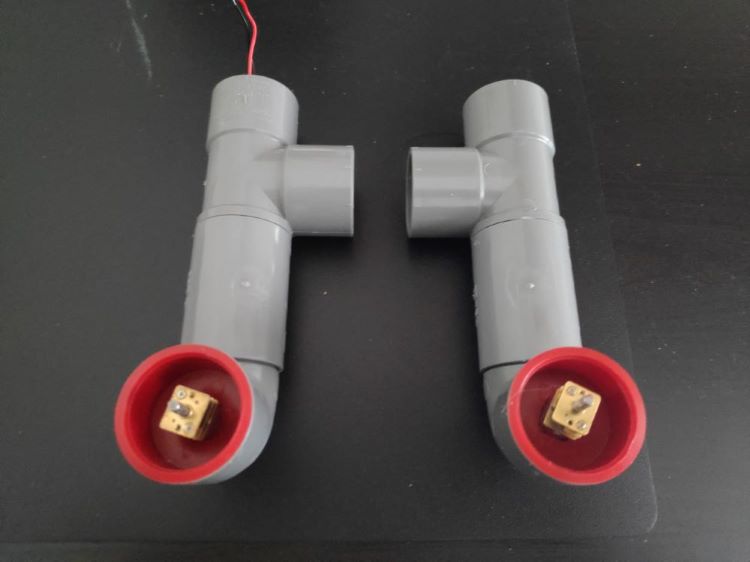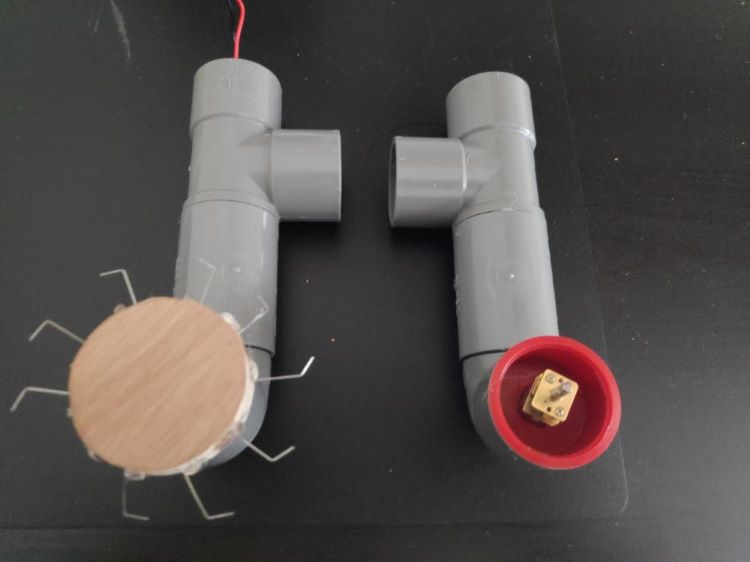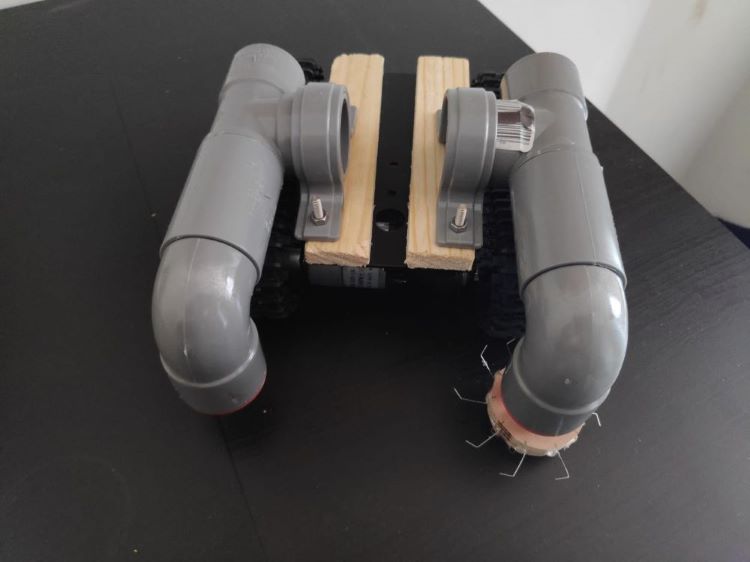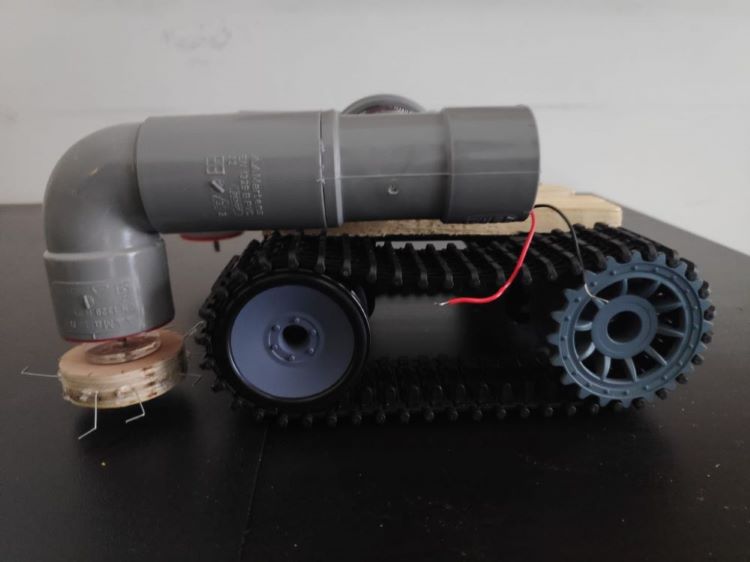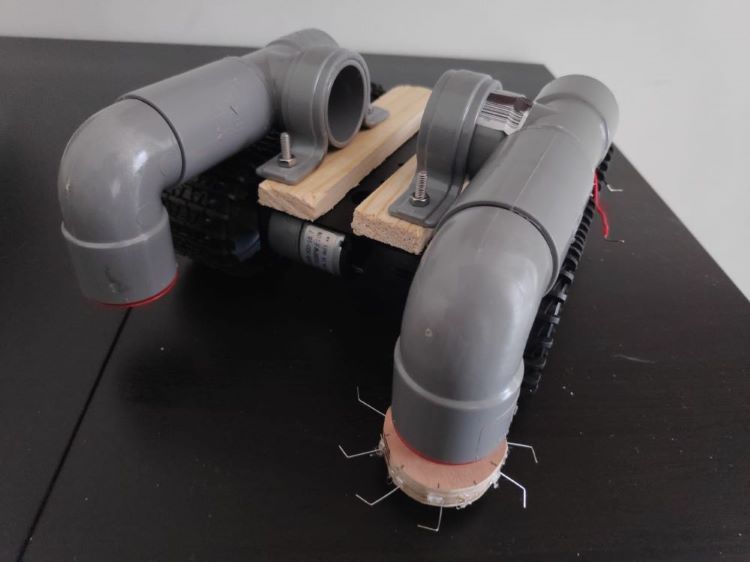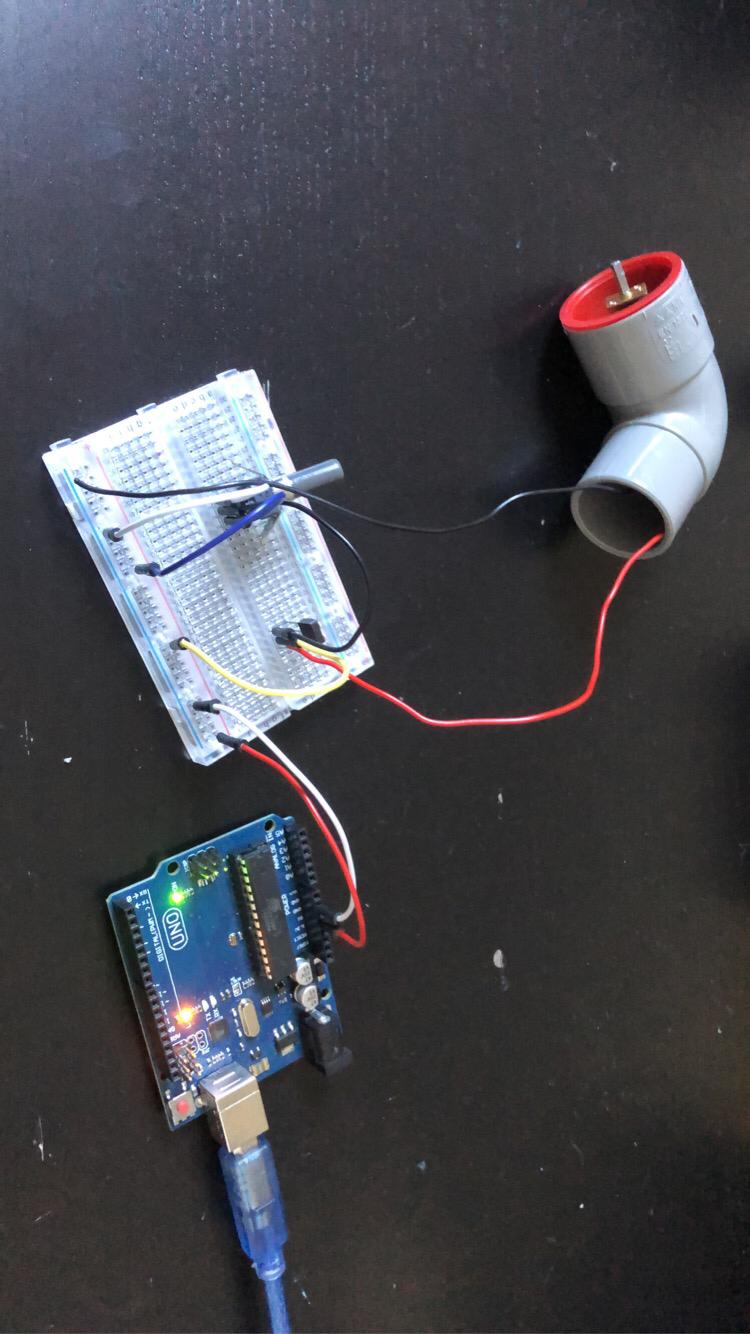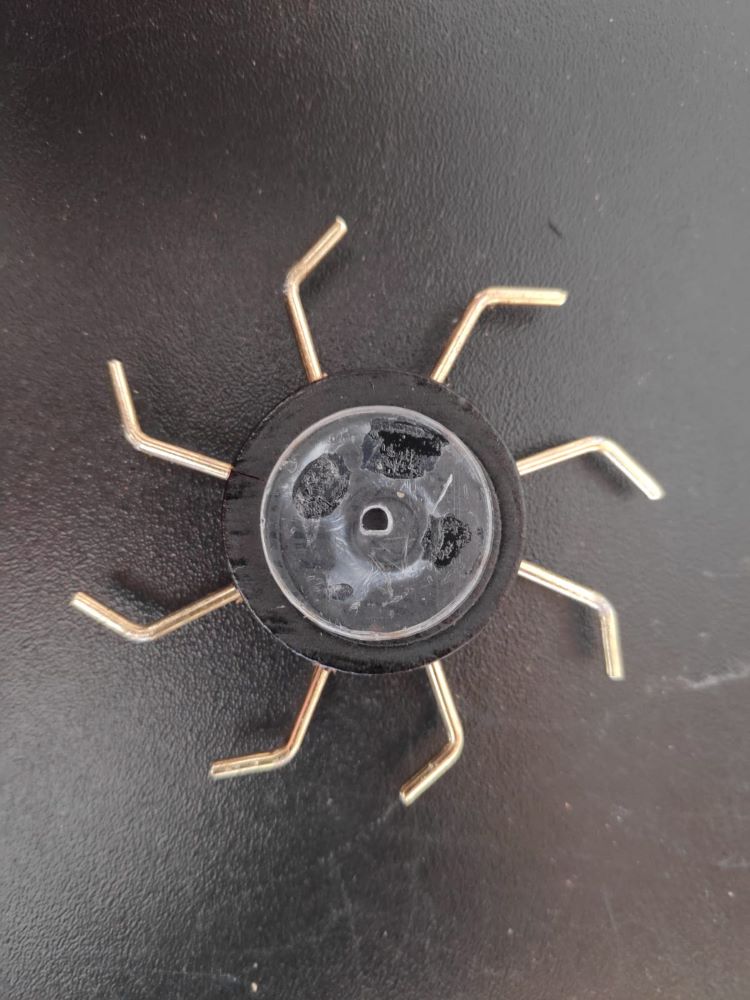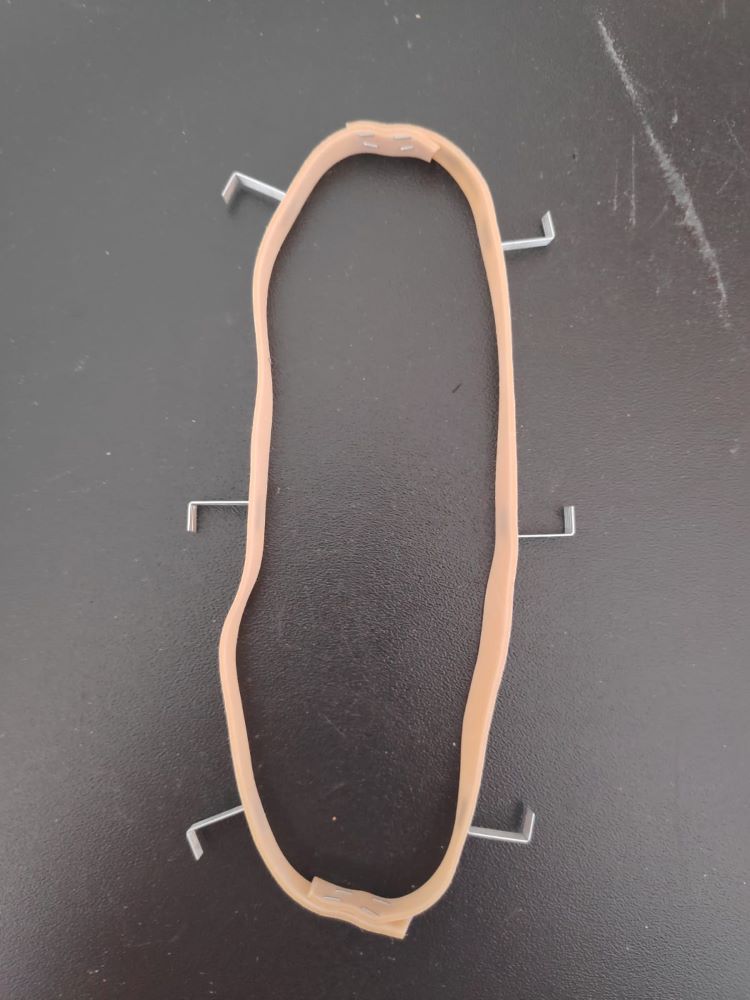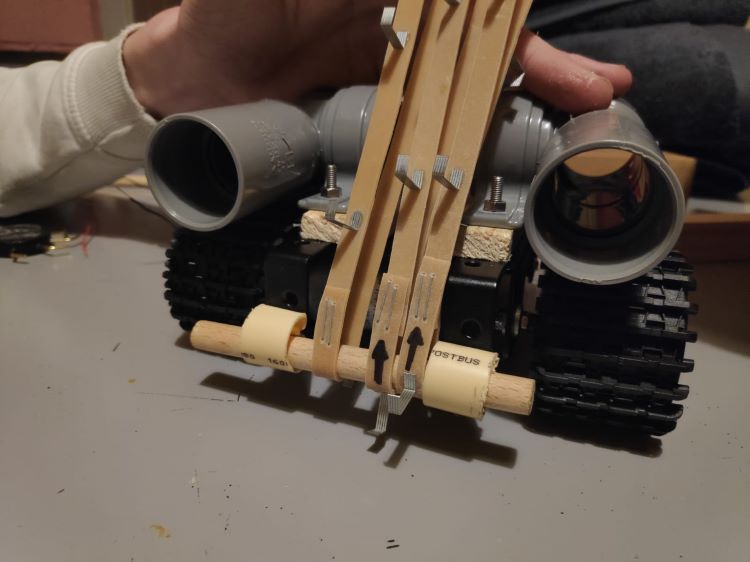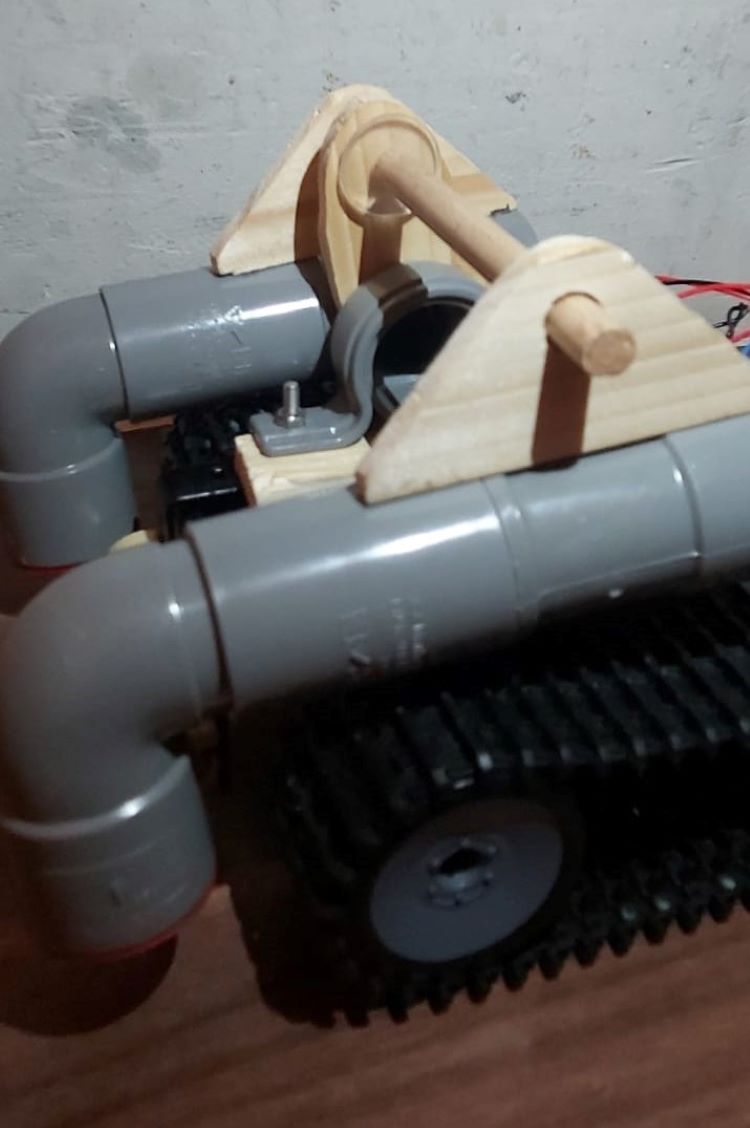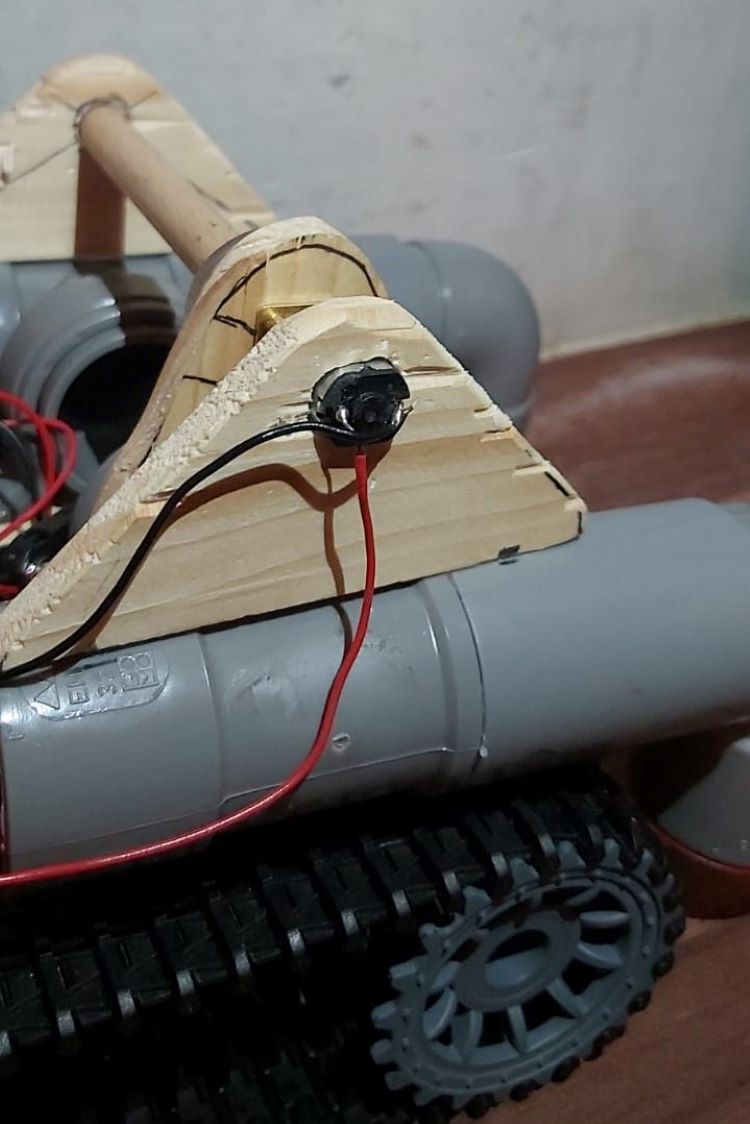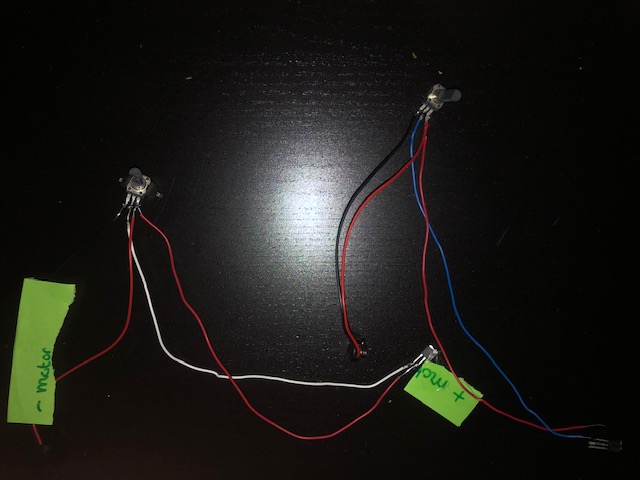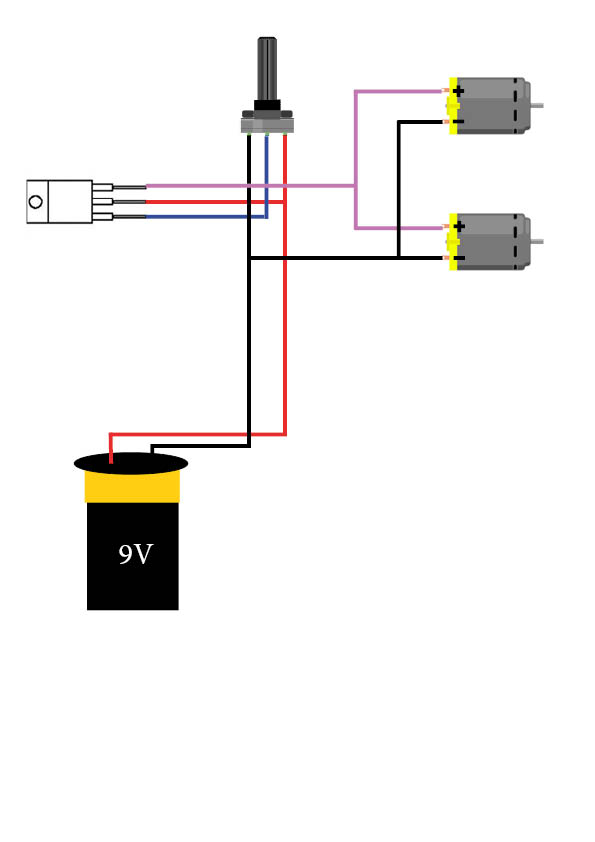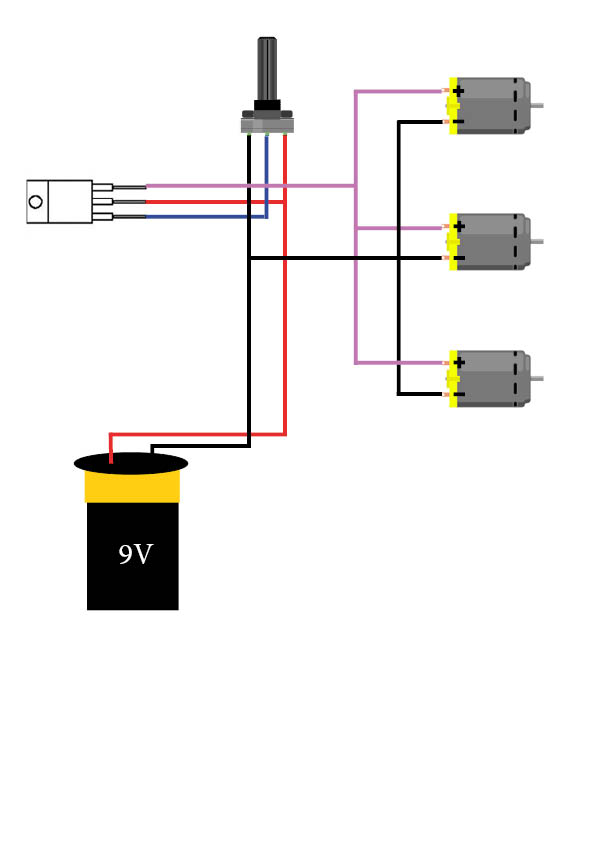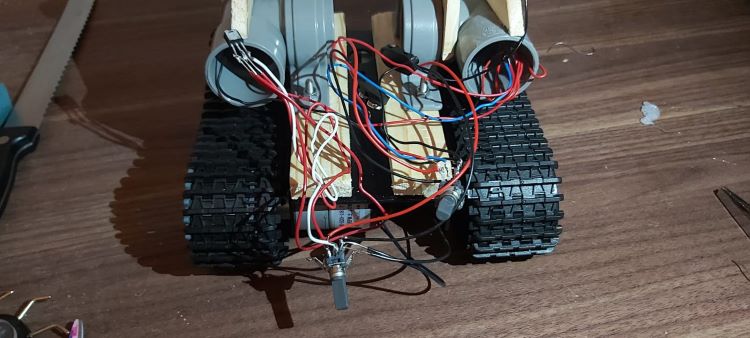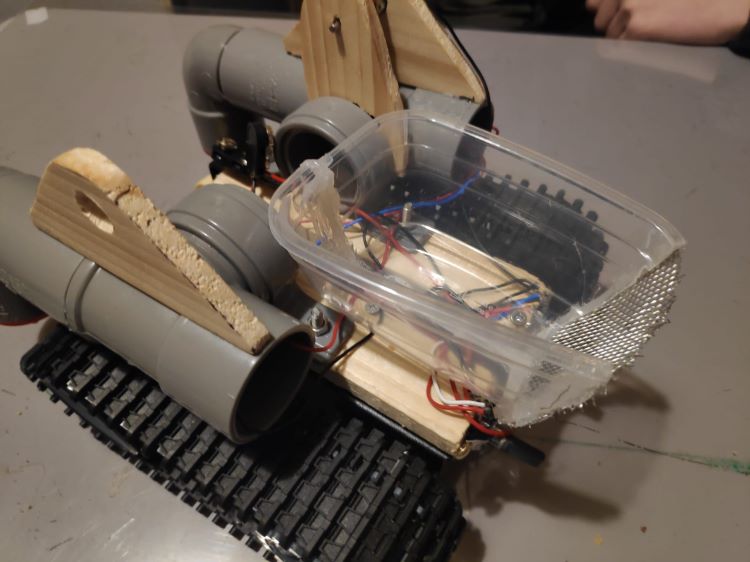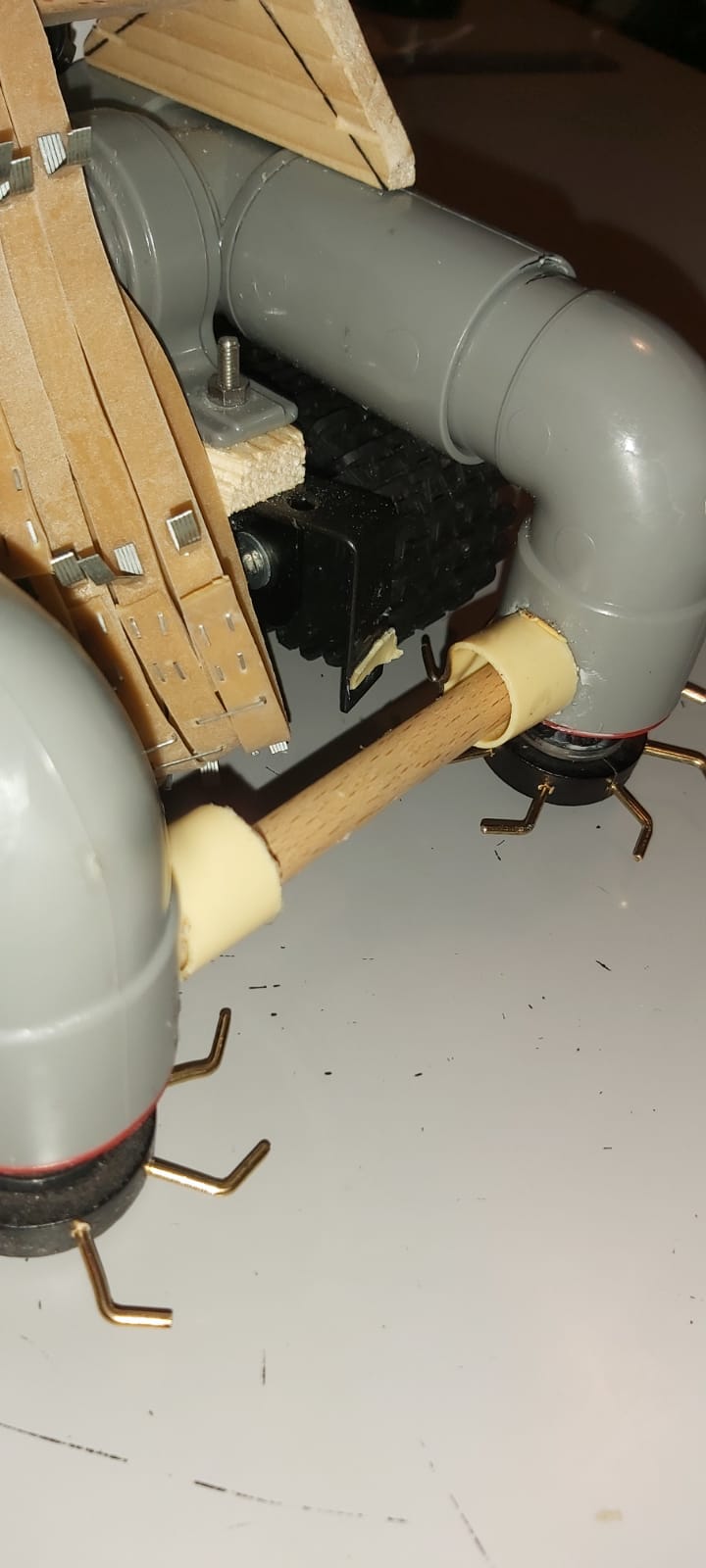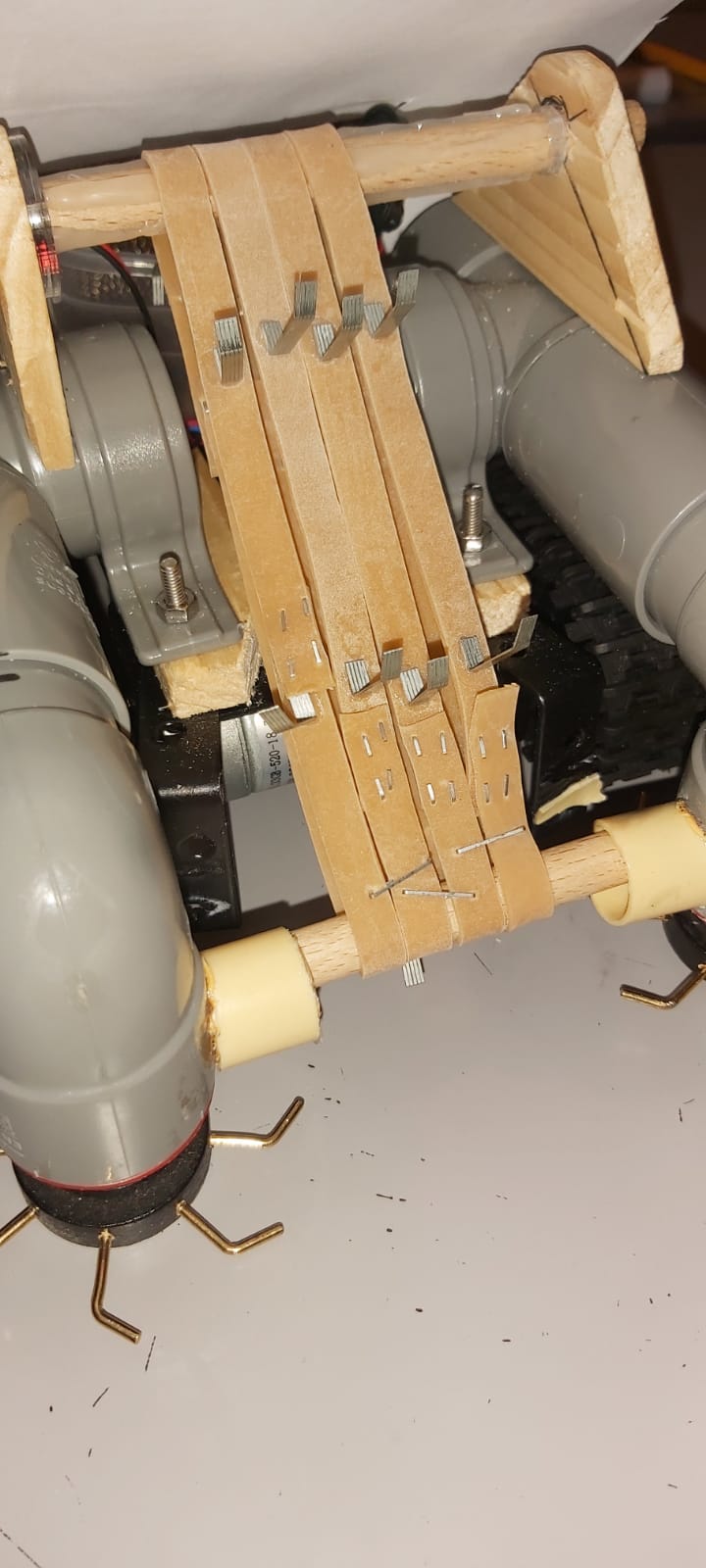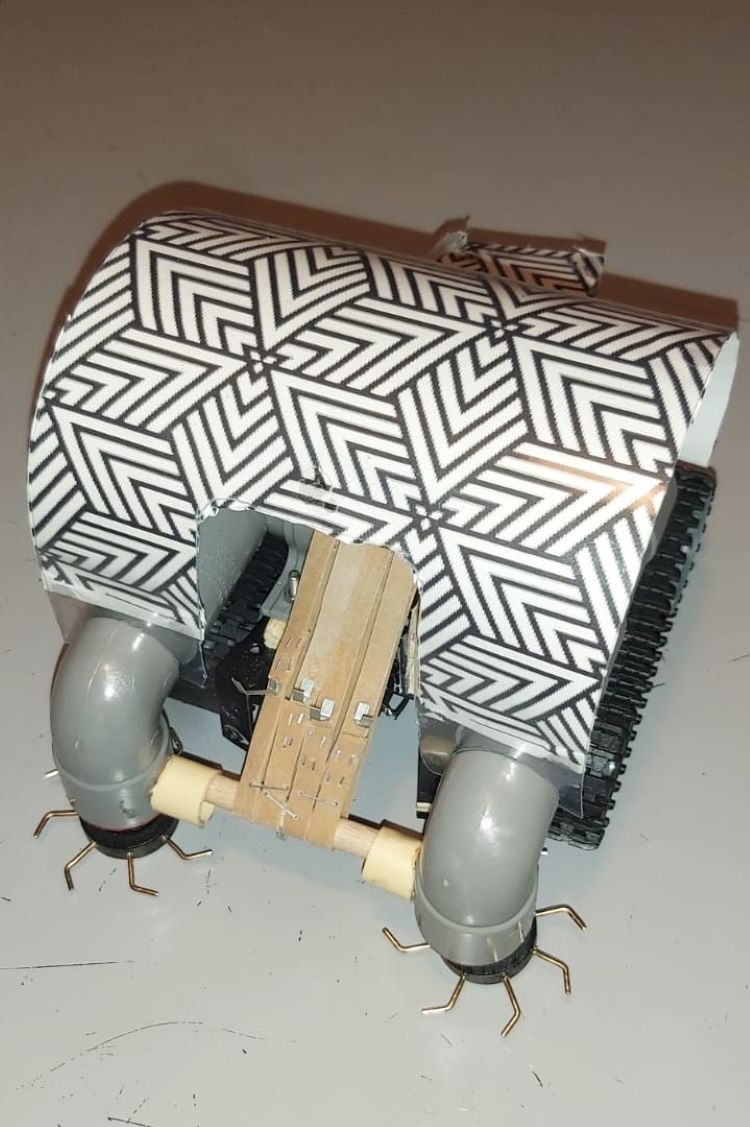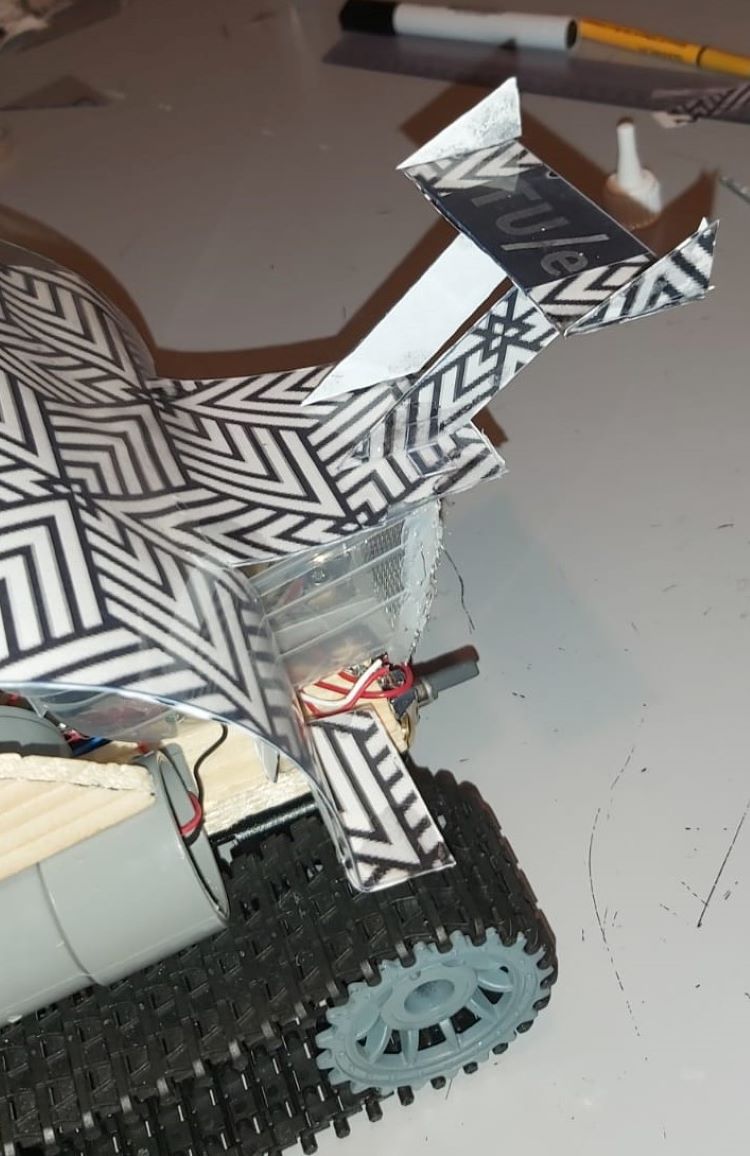PRE2019 3 Group20: Difference between revisions
| (90 intermediate revisions by 3 users not shown) | |||
| Line 1: | Line 1: | ||
== Group | == Group Members == | ||
{| class="wikitable" style="border-style: solid; border-width:1px;" cellpadding="3" | {| class="wikitable" style="border-style: solid; border-width:1px;" cellpadding="3" | ||
| Line 16: | Line 16: | ||
|} | |} | ||
== Problem | |||
== Problem Statement and Objectives == | |||
As summer approaches and it gets hotter in the Netherlands, yearly millions of people flock to the Dutch beaches to cool down, get a tan and escape the bustle of the city. | As summer approaches and it gets hotter in the Netherlands, yearly millions of people flock to the Dutch beaches to cool down, get a tan and escape the bustle of the city. | ||
| Line 29: | Line 31: | ||
== Users == | == Users == | ||
Our users are the RVB and the city councils of municipalities | Our users are the RVB and the city councils of municipalities that border a coast. | ||
In the Netherlands, all the beaches are property of the Rijksvastgoedbedrijf (RVB). The Rijksvastgoedbedrijf is the real estate organization of the Dutch government. It is responsible for the management and maintenance of all real estate owned by the Dutch state. This means that for the Dutch beaches, the Rijksvastgoedbedrijf together with the local city council are responsible for maintaining and taking care of the beach. Because they are both responsible for this task, they will also be the users of our robot. | |||
In this project we adopt a more specific focus on the beach of Scheveningen, as this is a well-known and touristy beach with the most annual visitors in the Netherlands. The people that carry a lot of responsibility for this beach are boulevard managers Eite Levinga and Peggy ten Hoopen. We have contacted them as they can provide us with more experience and expertise about the most common kind of litter and about their current techniques for litter-removal. | |||
=== Contacting the User Group === | |||
After receiving the feedback for the retake, we tried again to come in contact with one of the boulevard managers of Scheveningen beach. This was easier said than done, because we constantly got redirected or we got told that they were already busy enough with the current situation. After a lot of time talking to people on the phone, getting put on hold and getting redirected, we finally managed to arrange a Skype meeting with Peggy ten Hoopen. She is one of the beach and boulevard managers of Scheveningen beach, and she especially focuses on the cleanup and prevention of litter on the beach. She has a lot of knowledge on the problem at hand and the current ways of solving it, so she was the perfect person for us to talk to. | |||
During the Skype meeting with Peggy ten Hoopen, we first explained who we were and what we were working on. We did not show our robot yet, but explained that we were working on developing a solution for the litter problem on beaches. We then asked what currently is being done to solve this problem. She explained that her department tackled both the cleanup and prevention of litter on the beach. For the cleanup, she works a lot with local non-profit organisations, usually NGOs. An organisation she mentioned was TrashUre Hunt, a well-known local initiative that relies on volunteers, sponsors and some government funding to organise big cleanup events. For the prevention, she works with the municipality and city planners to arrange facilities in such a way that litter is minimized. So, the cleanup is mostly tackled by NGOs and the prevention by the municipality. | |||
We then talked about the problem at hand. Peggy told us that their department works a lot with ecologists to research how "healthy" their beach is. These ecologists make yearly reports including things like populations of wildlife, soil composition but also pollution. Peggy pointed out that in these reports there are always three main polluters that are caused by tourism stated: | |||
- Glass, which is mostly composed of (parts of) bottles. This is mainly dangerous for people walking on the beach, as they can cut open their feet on the shards. | |||
- Cigarette butts, which are very dangerous for seabirds like seagulls. This is because they sometimes perceive them as food and they are very toxic for the birds. | |||
- Soft plastics, often coming from food packaging. This has a lot of negative effects on the environment, one of them is that they break down in microplastics which are very damaging for the environment on land as well as in the sea. | |||
We eventually presented our robot, and asked for feedback. Peggy gave us two general aspects we should take into account. Firstly, the size of the robot needs to fit the situation. It needs to be big enough to be efficient, but small enough that it can maneuver between the obstacles on the beach like beach beds. In Scheveningen, the beach beds are around 2 meters from each other, and the robot should easily fit in this gap to not be obstructive to the visitors. The robot should also be efficient, because it needs to be attractive cost wise to purchase the robot instead of hiring people to do the job. | |||
=== Focus Concerning User Situation === | |||
We have been told by a potential user that there are three litter categories that are the main culprits on beaches. These categories ar glass, cigarette butts and soft plastics. After further investigation, it has been decided that we will focus on cleaning up soft plastic litter (food packaging, sandwich bags etc.) during this project. This choice was made for the following reason. Plastic waste is left behind not only on beaches, but wherever people go. Plastic waste is a major problem on beaches. The plastic waste ends up in the sea and forms a plastic soup. As can also be read in the problem statement, larger pieces of plastic waste fall apart into micro plastics<ref name="Rijksoverheid">Ministerie van Infrastructuur en Waterstaat. (2020, 24 april). Kunststofafval in zee (plastic soep). Geraadpleegd van https://www.rijksoverheid.nl/onderwerpen/afval/kunststofafval-in-zee-plastic-soep</ref><ref name="A review">Andrady, A. L. (2017). The plastic in microplastics: A review. Marine Pollution Bulletin, 119(1), 12–22. https://doi.org/10.1016/j.marpolbul.2017.01.082</ref>.The expectations are that these micro plastics are extremely harmful to wildlife, sea life and other nature<ref name="A review 2">Wright, S. L., Thompson, R. C., & Galloway, T. S. (2013). The physical impacts of microplastics on marine organisms: A review. Environmental Pollution, 178, 483–492. https://doi.org/10.1016/j.envpol.2013.02.031</ref><ref name="Planeet Zee">Planeet Zee. (z.d.). Geraadpleegd van http://www.planeetzee.be/lesmodule/3?page=7</ref>. | |||
Beaches can be kilometres long. These beaches have tourist zones and zones where people are not allowed to come. Most of the litter is left behind in the so-called tourist zones. In these zones, a lot of sunbeds are used by the tourists. It sometimes differs greatly per zone how much distance there is between these sunbeds and whether they are removed at night. On average, the beds are spaced about 1.5 meters apart (due to corona conditions, they are now testing with a distance of 2.5 meters)<ref name="Trouw">ter Rele, A. (2020, 18 mei). Tegenstrijdige regels verwarren strandtenteigenaren: ‘Elk strand heeft nu zijn eigen regels’. Geraadpleegd van https://www.trouw.nl/binnenland/tegenstrijdige-regels-verwarren-strandtenteigenaren-elk-strand-heeft-nu-zijn-eigen-regels~bb4a18f2/?referer=https%3A%2F%2Fwww.google.com%2F</ref>. In order to be able to clean the beaches properly, it is very important that the beach cleaning robot can maneuver between the sunbeds. | |||
The choice is clear that a concept will be made that will clean up plastic waste from the beaches. Important to know, before thinking of a concept, is what type of plastic waste can be found on the beaches. According to a 2013 study, the biggest plastic culprits on beaches are plastic food packaging, plastic bottles, straws and fishing nets<ref name="Planeet Zee 2">Planeet Zee. (z.d.). Geraadpleegd van http://www.planeetzee.be/lesmodule-print/3</ref>. Fishing nets are a problem on every beach, but not the biggest problem on the tourist beaches. Since we are going to make a beach cleaning robot for tourist beaches, we keep the fishing nets out of consideration. This means that a focus is placed on cleaning up plastic bottles, plastic food packaging and straws. | |||
=== Stakeholders === | === Stakeholders === | ||
| Line 55: | Line 70: | ||
== State of the Art == | == State of the Art == | ||
'''Similar projects''' | |||
''Solarino''<ref name="Solarino">DronyX. (2017, 7 april). ''Solarino Beach Cleaner Robot.'' Retrieved on 27 februari 2020, from https://www.dronyx.com/solarino-beach-cleaner-robot/''</ref> | |||
Solarino is a remote-controlled beach cleaning robot which is developed by the Italian company DronyX. The developers claim it is “the first ecofriendly, remote-controlled beach cleaning machine able to move both on wet and dry sandy terrain and to remove rubbish and other foreign matter” (DronyX, 2017). This robot distinguishes itself from other beach cleaning robots by its focus on eco-friendliness and robustness. | Solarino is a remote-controlled beach cleaning robot which is developed by the Italian company DronyX. The developers claim it is “the first ecofriendly, remote-controlled beach cleaning machine able to move both on wet and dry sandy terrain and to remove rubbish and other foreign matter” (DronyX, 2017). This robot distinguishes itself from other beach cleaning robots by its focus on eco-friendliness and robustness. | ||
| Line 71: | Line 84: | ||
All in all we can conclude that Solarino is a very well designed beach cleaning robot, with its strong points being its eco-friendliness, robustness and efficiency. However, where it falls short is that it is still remote-controlled and thus does not move around autonomously. Next to this is the fact that it has to charge after every 3 hours of working time and that it also removes rocks and shells from the beach. These weak points are something we can focus on in our project. | All in all we can conclude that Solarino is a very well designed beach cleaning robot, with its strong points being its eco-friendliness, robustness and efficiency. However, where it falls short is that it is still remote-controlled and thus does not move around autonomously. Next to this is the fact that it has to charge after every 3 hours of working time and that it also removes rocks and shells from the beach. These weak points are something we can focus on in our project. | ||
''Thailand’s Robotic Trash Collector''<ref name="Thailand">The Nation Thailand. (2017, 13 december). ''Home-grown robot to keep our beaches clean.'' Retrieved on 27 februari 2020, from https://www.nationthailand.com/national/30333842''</ref> | |||
This robot is the result of a collaboration between the Thai petroleum company PTTEP and Prince of Songkla University’s Faculty of Engineering. The robot is very similar to Solarino, but has some noticeable advantages and disadvantages. | This robot is the result of a collaboration between the Thai petroleum company PTTEP and Prince of Songkla University’s Faculty of Engineering. The robot is very similar to Solarino, but has some noticeable advantages and disadvantages. | ||
| Line 81: | Line 94: | ||
This robot has two main strong points. The first is its compact design. Because of its small size, it is able to collect litter around trees in wooded areas. This is important because it previously could not be done by tractor-pulled beach cleaners. The second strong point of this robot is that it can be built locally. This saves a lot of importing costs and boosts local employment, which is especially important for a country like Thailand. | This robot has two main strong points. The first is its compact design. Because of its small size, it is able to collect litter around trees in wooded areas. This is important because it previously could not be done by tractor-pulled beach cleaners. The second strong point of this robot is that it can be built locally. This saves a lot of importing costs and boosts local employment, which is especially important for a country like Thailand. | ||
''RF Controlled Beach Cleaner Robotic Vehicle''<ref name="RF">Nevon Projects. (2019, 3 januari). ''RF Controlled Beach Cleaner Robotic Vehicle.'' Retrieved on 12 march 2020, from https://nevonprojects.com/rf-controlled-beach-cleaner-robotic-vehicle/''</ref> | |||
The following robot has been developed by the Indian based Nevon Projects in 2019. Similar as the robots mentioned above, this robot has the purpose of picking up litter from beaches in an effective and eco-friendly way. Just as the Thai robot described earlier, this robot is a local initiative to fight pollution on beaches. However, this beach cleaning robot distinguishes itself from other examples by its shape, size, use of technique and simplicity. | The following robot has been developed by the Indian based Nevon Projects in 2019. Similar as the robots mentioned above, this robot has the purpose of picking up litter from beaches in an effective and eco-friendly way. Just as the Thai robot described earlier, this robot is a local initiative to fight pollution on beaches. However, this beach cleaning robot distinguishes itself from other examples by its shape, size, use of technique and simplicity. | ||
| Line 127: | Line 140: | ||
Tracks offer more grip as the wheels are all connected through a track. This offers more surface area on the sand as well as being able to dig in to the sand using grip on the track itself so it can dig in to the sand and create as much friction as it can. | Tracks offer more grip as the wheels are all connected through a track. This offers more surface area on the sand as well as being able to dig in to the sand using grip on the track itself so it can dig in to the sand and create as much friction as it can. | ||
== RPC's == | == RPC's == | ||
Requirements | Requirements | ||
*The robot should be able to pick up soft plastics ( | *The robot should be able to pick up soft plastics (plastic food packaging, etc.) that weigh less than 50g. | ||
*The | *The robot should be able to pick up plastics of 30 cm in size. | ||
*The effective width of the robot should be 100 cm. | *The effective width of the robot should be 100 cm. | ||
*The robot should be able to pick up at least 70% of the plastics that it encounters. | |||
*The robot should be able to pick up at least | |||
*The grabbing system should be sand and waterproof. | *The grabbing system should be sand and waterproof. | ||
Preferences | Preferences | ||
*The robot receives the least amount of sand. | *The robot receives the least amount of sand. | ||
*The robot cleans the beach as fast as possible. | *The robot cleans the beach as fast as possible. | ||
*The robot is feeded by renewable energy. | *The robot is feeded by renewable energy. | ||
*The robot knows when its litter saver is full. | *The robot knows when its litter saver is full. | ||
*The robot works autonomous | *The robot works autonomous. | ||
'''Argumentation Requirements''' | |||
The user group has indicated that plastic is in the top three categories of waste on the beach. In addition, after conducting further research, it has become clear that this plastic waste is very likely to be very harmful to the environment because it decomposes into micro plastics. This plastic waste mainly consists of plastic food packaging, plastic bottles and straws. Plastic food packaging are the largest pieces of waste that fall under these groups. Plastic food packaging weigh on average between 10 and 30 grams<ref name="Plasticcijfers" />. On the beach there is a chance that there is some sand over these plastic food packages, making these waste slightly heavier. That is why we have set the maximum weight that the robot should be able to pick up at 50 grams. Items heavier than 50 grams are probably not made of plastic. The robot will then leave these objects. | |||
As mentioned earlier, plastic food packaging are the largest pieces of plastic that the robot will have to deal with. Plastic food packaging are often crumpled up on the beach, but that is not always the case. When a plastic food packaging is laid out on the beach, the robot must be able to clean it up. In the Netherlands, the largest plastic plastic food packages are on average 25 cm x 30 cm big<ref name="Plasticcijfers">Plasticcijfers. (2020, 1 mei). Geraadpleegd van https://www.plasticsoupfoundation.org/plastic-probleem/feiten-en-cijfers/plasticcijfers/</ref>. This does not necessarily mean that plastic food packages of this size are also most often found on the beaches. On beaches, plastic food packages are a lot of different sizes, but almost never larger than 25 cm x 30 cm. This means that the robot should be able to pick up plastics with a maximum size of 30 cm. | |||
The robot must be as effective as possible and must have the widest possible litter range. Research has shown that there is an average of 1.5 meters between the beach beds. The robot must be able to maneuver through it. Since the robot can rotate on its own axis, the diagonal of the robot must not exceed 1.5 meters. From calculations it follows that the robot should not be more than 1.05 meters wide, in order to be able to maneuver between the beds. To ensure that the robot is as effective as possible. The effective width of the robot must be at least 100 cm. | |||
As can be seen with the beach cleaning robot "RF Controlled Beach Cleaner Robotic Vehicle", this robot does not work very efficiently. The robot leaves a lot of plastic that the robot encounters. By analyzing several videos of the "RF Controlled Beach Cleaner Robotic Vehicle", we were able to find that the "RF Controlled Beach Cleaner Robotic Vehicle" clears about 60 percent of the dirt it encounters. However, the pick-up system of the RF Controlled Beach Cleaner Robotic Vehicle has been put together very interestingly and could achieve a lot more. Our robot must pick up at least 70% of the plastic it encounters. In this way, our grabbing system works a lot more efficiently than that of the RF Controlled Beach Cleaner Robotic Vehicle. In addition, we have been told by the user group that the cleaning teams, which now clean the beaches, also miss a lot of garbage. No exact numbers have been given, but the user group has indicated that a robot that cleans up at least half of the garbage would already be a very useful tool. | |||
The grabbing system should be sand and waterproof. The robot we make is a beach cleaning robot. So this robot cleans the beaches. Beaches often consist of sand, so the robot will often have to drive over sand. To ensure that the pick-up system will not crash or break, it must be sandproof. In addition, it is efficient if the robot can work every day and during different weather conditions. The robot will also have to be functional during rainy weather. In addition, there is a chance that the robot will touch water from the sea. To ensure that the pick-up system will not crash when it rains or touches water from the sea, it must be waterproof. | |||
== The Concept == | == The Concept == | ||
| Line 160: | Line 191: | ||
While studying the "State of the Art" of the topic "Grabbing System" we noticed several things. Many Grabbing Systems of existing robots are similar. For example, there are many robots that use buckets. The downside of these buckets is that they also pick up shells and stones from the beach. This is of course not the intention when cleaning the beaches. There are also several existing robots that use a system with rotating hooks. These hooks pick up the litter from the beaches, without taking stones and shells with it. It seemed to us that this system worked better than buckets. | While studying the "State of the Art" of the topic "Grabbing System" we noticed several things. Many Grabbing Systems of existing robots are similar. For example, there are many robots that use buckets. The downside of these buckets is that they also pick up shells and stones from the beach. This is of course not the intention when cleaning the beaches. There are also several existing robots that use a system with rotating hooks. These hooks pick up the litter from the beaches, without taking stones and shells with it. It seemed to us that this system worked better than buckets. | ||
The conceived concept, which will solve the problem statement, is inspired by an existing beach cleaning robot, called RF Controlled Beach Cleaner Robotic Vehicle, that uses the system with the rotating hooks | The conceived concept, which will solve the problem statement, is inspired by an existing beach cleaning robot, called RF Controlled Beach Cleaner Robotic Vehicle, that uses the system with the rotating hooks<ref name="RF" />. What struck us about this existing beach cleaner is that it has a narrow litter range. In addition, this beach cleaner did not pick up enough litter that it encountered. To solve these adverse factors, we were inspired by a different type of cleaner, namely a street sweeper machine for trash collecting<ref name="Zoni">Zoni, S. (2020). Retrieved 12 March 2020, from https://patentimages.storage.googleapis.com/b2/ba/3f/b7a7790a0497ad/US4754521.pdf | ||
''</ref>. This street cleaner has two brushes on the front of the machine. These brushes ensure that the machine has a wider litter range. The brushes are placed on the two sides of the front of the machine and rotate towards the center of the machine. | |||
Based on the RPCs and the State of the Art, a concept has been devised as a solution to the problem statement. We saw that some of these robots did not use the full width of their vehicles to pick up plastics. This concept consists of three parts in width. The first and third parts are the left and right sides of the robot, respectively, and consist of two round, rotating hook systems. These two systems rotate toward the center of the robot. This ensures that all trash that approaches the side of the robot is brought to the center. The second part is the center of the robot. This part consists of a rotating hook system in the form of a conveyor belt. This conveyor belt raises all the plastic garbage. We decided on combining side sweepers and a conveyor belt in the middle to make the range width of the robot as big as possible. At the top of the conveyor belt, the plastic garbage falls into a bin. The bottom of this container consists of a sieve, so that the sand that has come along comes back on the beach. The robot runs on tracks. This makes it easier for the robot to drive over small holes and small bumps. The robot is 100 cm wide and therefore also has a range of 100 cm. This range is lot wider than the range of the RF Controlled Beach Cleaner Robotic Vehicle. | Based on the RPCs and the State of the Art, a concept has been devised as a solution to the problem statement. We saw that some of these robots did not use the full width of their vehicles to pick up plastics. This concept consists of three parts in width. The first and third parts are the left and right sides of the robot, respectively, and consist of two round, rotating hook systems. These two systems rotate toward the center of the robot. This ensures that all trash that approaches the side of the robot is brought to the center. The second part is the center of the robot. This part consists of a rotating hook system in the form of a conveyor belt. The front axis of this belt will be as close to the ground as possible as it has to be able to reach to plastics on the ground. The top axis will be in the middle of the robot, making the belt have a 45 degree angle. This conveyor belt raises all the plastic garbage. We decided on combining side sweepers and a conveyor belt in the middle to make the effective range width of the robot as big as possible. At the top of the conveyor belt, the plastic garbage falls into a bin. The bottom of this container consists of a sieve, so that the sand that has come along comes back on the beach. The robot runs on tracks. This makes it easier for the robot to drive over small holes and small bumps. The robot is 100 cm wide and therefore also has a range of 100 cm. This range is lot wider than the range of the RF Controlled Beach Cleaner Robotic Vehicle. | ||
A sketch of the concept: | A sketch of the concept: | ||
| Line 168: | Line 200: | ||
[[File:IMG_1492.jpg]] | [[File:IMG_1492.jpg]] | ||
The concept is intended to clean up lightweight soft plastics (<50 g) that are smaller than the middle part of the robot. When an object is too heavy or too big to be picked up, the robot will notice it. We are using 3 dc motors to move the 2 round sweepers and the track. To detect when there is something stuck or the robot has gotten stuck in the sand, one can use a multimeter. You can easily measure the amp draw of the motor the current will jump up significantly when the motor is being held back, has too much friction or when something is stuck between the sweepers and track. | == Use Of Sensors == | ||
Initially, we planned on using an arduino to incorporate this feature. By measuring the current on the arduino and integrating that in a simple if-statement in the code, we could stop and reverse the spinning direction of the dc motors. The robot will turn 90 degrees and continue its cleaning journey. In the end, the decision was made not to use arduino because the dc motors could be easily hooked up to a potmeter and a power supply making it easy to control without using an | The concept is intended to clean up lightweight soft plastics (<50 g) that are smaller than the middle part of the robot. When an object is too heavy or too big to be picked up, the robot will notice it. We are using 3 dc motors to move the 2 round sweepers and the track. To detect when there is something stuck or the robot has gotten stuck in the sand, one can use a multimeter. You can easily measure the amp draw of the motor the current will jump up significantly when the motor is being held back, has too much friction or when something is stuck between the sweepers and track. Initially, we planned on using an arduino to incorporate this feature. By measuring the current on the arduino and integrating that in a simple if-statement in the code, we could stop and reverse the spinning direction of the dc motors. The robot will turn 90 degrees and continue its cleaning journey. In the end, the decision was made not to use arduino because the dc motors could be easily hooked up to a potmeter and a power supply making it easy to control without using an Arduino. In future iterations, using an Arduino, we would have added a number of sensors to the robot. By incorporating an Arduino and sensors, the robot can be programmed to efficiently clean an x amount of square meters using a pattern. To realize this, a navigation system needs to be implemented in the Arduino code and the robot will require the following sensors. a Arduino GPRS/GPS Tracker Shield would be used to track the robot across the beach. A HMC5883L magneto resistive compass sensor can make sure that the robot will follow a straight line by controlling the wheel speed mapped to this sensor. HC-SR04 Ultrasonic sonar distance sensors can be mounted around the robot. These will detect any object that is in the way of their route and the Arduino program can guide the robot around it. To detect whether the bin in the back of the robot is full, GL5537 LDRs can be used. When the bin is full the program can guide it to a disposal station. Finally, a high quality camera can be added in the front of the robot. Together with object detection software, the robot can detect any plastics on the beach and divert his course towards it. All the features mentioned above will increase the efficiency of this robot. | ||
== Prototype Development == | |||
Because we had limited supplies and resources during this time due to the current pandemic, and we could not use any equipment available on campus like 3D printers and tools from the vertigo workspace, we had to be creative and work with other materials to build our robot. Meetings were very hard to schedule consistently because of social distancing and since this is a hands on project with the prototype as end product, this caused some delay. | |||
=== Step 1 === | === Step 1 === | ||
| Line 292: | Line 322: | ||
This is the final prototype. | This is the final prototype. | ||
== Proof of concept == | |||
The concept of which the effectiveness we are trying to prove is the combination of a conveyor belt and side-sweepers used in the pick up system of a beach cleaning robot. The goal of this combination is to increase the effective width of the robot in which litter is being picked up. This concept is yet to be tested on full scale. The prototype is a small-scale version of the final product and functions to validate the concept. The pick up ratio of the prototype is lower than expected due to assembly flaws. However, the full scale product will have stronger motors and mechanisms with less friction so it will not face this problem. The full scale model will have a width of 1m and will be made out of stainless steel and aluminum. This will make sure the robot is robust and can handle the running mechanisms efficiently which extends its lifetime. | |||
The concept has proven to be effective as it is able to guide the plastics to the center where it can be picked up. This is also seen in the street-sweepers where they use a similar technique. The sweepers on the side of the robot will run using DC motors. | |||
The rotating movement to the inside of the machine also directs the waste to the middle. Street sweepers have been riding the streets for years, sweeping up everything they encounter. The side sweepers of these street sweepers have shown in practice that they actually do what they are made for. By applying these side sweepers in our concept, we not only ensure that the plastic waste is directed to the center of the robot. These sweepers also ensure that the litter range of the robot is larger as they reach out past the width of the wheelbase. Street sweepers use sweepers with hairs on them. This will not work well on the beach because these hairs will cause the sand to be directed to the center of the robot as well which requires extra power from the motors. As, in our concept, we want to sweep up loose pieces of plastics instead of dirt, these hairs have been replaced by hooks. By making different prototypes of the sweepers (with hooks at angles of 80 degrees, 90 degrees, 100 degrees, 110 degrees, 120 degrees and 130 degrees), it has become clear after various tests that hooks in angles of 120 degrees work best. These 120 degrees provide optimal reach and grip strength on the plastic waste. By not making these angles too sharp, it is ensured that the plastic waste does not get caught in the hooks. As can be read under the heading "RPCs", there is a requirement that the robot must be able to clean up plastic waste of 50 grams. However, the motors should be able to handle the rotation of the sweepers and should be able to pull plastics out from under the sand. These sweepers are quite large and will be made of a sturdy but light material. When exploring materials that have such features, aluminum was ranked highest. Aluminum is a very compatible material for this as it is very robust and lightweight. This is perfect for this use as the sweepers should be as light as possible but still sturdy. In the final product, these sweepers will also be quite large. Which again means that the DC motors must still be strong. All in all, despite the minor change from hairs to hooks, the concept of using sweepers to direct litter to the middle of the robot still proves to be effective and capable of the goal it has within our design both on the the street sweepers and in our prototype. | |||
The conveyor belt on this prototype is made of wooden parts as we did not have any other resources at the time. Therefore, it could not perform as desired. The final product will have a much more sophisticated system in terms of materials which will make this belt run smoothly. The conveyor belt was now turned solely by friction of the belt on his axis. In further iterations, this will be replaced by a mechanism that is quite similar to a bike’s. The performance of the conveyor belt will be improved by the use of a stainless steel chain between both axis. The axis will be made out of stainless steel and will be mounted with bearings to the base to minimize friction. Stainless steel ensures the robots lifetime and will prevent damage by the salty seawater. This chain mechanism has been used before on the RF Controlled Beach Cleaner Robotic Vehicle or RF-CBCRV (see related works) and has proven its effectiveness. A stronger motor to power this combined with minimal friction will ensure that this mechanism will be able to effectively pick up the litter. | |||
The combination of these two features has been proven to work by our prototype. The side sweepers were effective and the conveyor belt has already been proven to work by the creators of the RF-CBCRV. Despite the fact that some plastics were left behind when testing our prototype, this concept has proved to be able to direct the plastics to the middle using the side sweepers and therefore widening the range of the robot. One of the requirements that has been drawn up is that the robot has to clean up at least 70% of the plastic waste it encounters. This requirement has been drawn up to ensure that this cleaning robot works more efficiently and effectively than other cleaning robots. The robot that is going to be built is considered effective, if this really cleans up at least 70% of the plastic waste it encounters. | |||
== Video == | |||
https://youtu.be/Wz8ePpssEgA | |||
== Future Work == | == Future Work == | ||
| Line 303: | Line 351: | ||
Finally, an obvious implication for future work is to build and test the concept in full scale. Now, we have only made a scaled prototype, but to accurately and critically test the concept it needs to be in full scale on a real beach. The results of this test can then be used to redesign the robot and make it more efficient. In order to further develop the robot, this is an indispensable step. | Finally, an obvious implication for future work is to build and test the concept in full scale. Now, we have only made a scaled prototype, but to accurately and critically test the concept it needs to be in full scale on a real beach. The results of this test can then be used to redesign the robot and make it more efficient. In order to further develop the robot, this is an indispensable step. | ||
== Approach, | |||
== Approach, Milestones and Deliverables == | |||
=== Approach === | === Approach === | ||
| Line 336: | Line 386: | ||
== Timekeeping == | == Timekeeping == | ||
| Line 468: | Line 517: | ||
!style="text-align:left;"| Breakdown | !style="text-align:left;"| Breakdown | ||
|- | |- | ||
| Erik Heijerman || | | Erik Heijerman || 19 || Group Meeting: 8, Buying stuff for prototyping: 2, Pick up DC motors: 1, Prototyping: 8, | ||
|- | |- | ||
| Wouter Meeuwis || 22.5 || Buying stuff for prototyping: 2, Pick up DC motors: 1, Group Meeting: 8, Research N-Fet: 2, Building circuits: 3, Prototyping: 4, Wiki editten: 0.5, Research on garbage can: 2 | | Wouter Meeuwis || 22.5 || Buying stuff for prototyping: 2, Pick up DC motors: 1, Group Meeting: 8, Research N-Fet: 2, Building circuits: 3, Prototyping: 4, Wiki editten: 0.5, Research on garbage can: 2 | ||
| Line 474: | Line 523: | ||
| Kevin Pits || || | | Kevin Pits || || | ||
|- | |- | ||
| Teun Schutten || | | Teun Schutten || 20 || Group Meeting: 8, Buying stuff for prototyping: 2, Pick up DC motors: 1, Prototyping: 6, Updating Wiki: 3 | ||
|- | |- | ||
|} | |} | ||
| Line 485: | Line 534: | ||
!style="text-align:left;"| Breakdown | !style="text-align:left;"| Breakdown | ||
|- | |- | ||
| Erik Heijerman || | | Erik Heijerman || 24 || Group meetings: 13, Buying stuff for prototyping: 2, prototyping: 6, Skype meeting: 1, Shooting videos: 2 | ||
|- | |- | ||
| Wouter Meeuwis || 22.5 || Group meetings: 13, Buying stuff for prototyping: 2, prototyping: 4, Skype meeting: 1, Reasoning: 2.5 | | Wouter Meeuwis || 22.5 || Group meetings: 13, Buying stuff for prototyping: 2, prototyping: 4, Skype meeting: 1, Reasoning: 2.5 | ||
| Line 491: | Line 540: | ||
| Kevin Pits || 0 || | | Kevin Pits || 0 || | ||
|- | |- | ||
| Teun Schutten || | | Teun Schutten || 27 || Group meetings: 13, Buying stuff for prototyping: 2, prototyping: 6, Skype meeting: 1, Shooting videos: 5 | ||
|- | |- | ||
|} | |} | ||
| Line 502: | Line 551: | ||
!style="text-align:left;"| Breakdown | !style="text-align:left;"| Breakdown | ||
|- | |- | ||
| Erik Heijerman || | | Erik Heijerman || 11 || Group Meeting: 4, Writing pitch presentation: 3, Recording presentation: 1, Editing wiki: 2, Editing presentation video: 1, | ||
|- | |- | ||
| Wouter Meeuwis || | | Wouter Meeuwis || 10 || Group Meeting: 4, Making Video Presentation: 3, Editing Wiki: 1, Making Schematics: 1,5, referencing: 0,5 | ||
|- | |- | ||
| Kevin Pits || 0 || | | Kevin Pits || 0 || | ||
|- | |- | ||
| Teun Schutten || | | Teun Schutten || 14 || Group Meeting: 4, Editing Prototype Video: 6, Writing Future Works: 2, Referencing: 1, Cleaning Wiki: 1 | ||
|- | |- | ||
|} | |} | ||
== References == | == References == | ||
<references /> | <references /> | ||
Latest revision as of 20:28, 1 June 2020
Group Members
| Name | Student ID | Program |
|---|---|---|
| Erik Heijerman | 1298968 | Industrial Design |
| Wouter Meeuwis | 1338390 | Industrial Design |
| Kevin Pits | 0896637 | Software Science |
| Teun Schutten | 1333607 | Industrial Design |
Problem Statement and Objectives
As summer approaches and it gets hotter in the Netherlands, yearly millions of people flock to the Dutch beaches to cool down, get a tan and escape the bustle of the city. this is not only a popular activity for locals, but also for millions of tourists who visit the Netherlands every year. The beach at Scheveningen, one of the most popular beaches in the Netherlands, already welcomes 17 million visitors annually[1].
This big source of tourism boosts the local economy, but also has its downsides. Because more often than not there are too few trash cans on the beaches, and people generally cannot be bothered to take their trash with them, beaches get littered. Lots of plastic packaging, glass bottles, aluminum cans and other waste ends up in the sand, most of which does not decompose. Plastic waste in particular is a major problem on the beaches. Larger pieces of plastic break up into micro plastics. These micro plastics end up in nature and are expected to be very harmful to wildlife, sea life and other nature.
There have been some local initiatives to clean up litter on the beaches. An example of this is a yearly 95 day clean up action at the beach of Scheveningen, that this year resulted in 3100 kilos of collected trash[1]. However, the entire problem cannot be solved by these local initiatives only. Having people picking up litter is very time consuming, inefficient and it requires a lot people to properly do it. On top of this, because of bad labor circumstances it almost always has to be done by volunteers.
In this project, we want to develop a robot which is able to autonomously collect plastics on beaches in an efficient, strategic and sustainable way to counter the plastic waste which breaks up into micro plastics. We will mainly focus on the robot's grabbing system. The robot is first and foremost aimed to be more efficient than its human counterparts by using innovative techniques to pick up litter and by working more continuously. Another objective is that the robot has to function in a sustainable way by using renewable energy.
Users
Our users are the RVB and the city councils of municipalities that border a coast.
In the Netherlands, all the beaches are property of the Rijksvastgoedbedrijf (RVB). The Rijksvastgoedbedrijf is the real estate organization of the Dutch government. It is responsible for the management and maintenance of all real estate owned by the Dutch state. This means that for the Dutch beaches, the Rijksvastgoedbedrijf together with the local city council are responsible for maintaining and taking care of the beach. Because they are both responsible for this task, they will also be the users of our robot.
In this project we adopt a more specific focus on the beach of Scheveningen, as this is a well-known and touristy beach with the most annual visitors in the Netherlands. The people that carry a lot of responsibility for this beach are boulevard managers Eite Levinga and Peggy ten Hoopen. We have contacted them as they can provide us with more experience and expertise about the most common kind of litter and about their current techniques for litter-removal.
Contacting the User Group
After receiving the feedback for the retake, we tried again to come in contact with one of the boulevard managers of Scheveningen beach. This was easier said than done, because we constantly got redirected or we got told that they were already busy enough with the current situation. After a lot of time talking to people on the phone, getting put on hold and getting redirected, we finally managed to arrange a Skype meeting with Peggy ten Hoopen. She is one of the beach and boulevard managers of Scheveningen beach, and she especially focuses on the cleanup and prevention of litter on the beach. She has a lot of knowledge on the problem at hand and the current ways of solving it, so she was the perfect person for us to talk to.
During the Skype meeting with Peggy ten Hoopen, we first explained who we were and what we were working on. We did not show our robot yet, but explained that we were working on developing a solution for the litter problem on beaches. We then asked what currently is being done to solve this problem. She explained that her department tackled both the cleanup and prevention of litter on the beach. For the cleanup, she works a lot with local non-profit organisations, usually NGOs. An organisation she mentioned was TrashUre Hunt, a well-known local initiative that relies on volunteers, sponsors and some government funding to organise big cleanup events. For the prevention, she works with the municipality and city planners to arrange facilities in such a way that litter is minimized. So, the cleanup is mostly tackled by NGOs and the prevention by the municipality.
We then talked about the problem at hand. Peggy told us that their department works a lot with ecologists to research how "healthy" their beach is. These ecologists make yearly reports including things like populations of wildlife, soil composition but also pollution. Peggy pointed out that in these reports there are always three main polluters that are caused by tourism stated:
- Glass, which is mostly composed of (parts of) bottles. This is mainly dangerous for people walking on the beach, as they can cut open their feet on the shards.
- Cigarette butts, which are very dangerous for seabirds like seagulls. This is because they sometimes perceive them as food and they are very toxic for the birds.
- Soft plastics, often coming from food packaging. This has a lot of negative effects on the environment, one of them is that they break down in microplastics which are very damaging for the environment on land as well as in the sea.
We eventually presented our robot, and asked for feedback. Peggy gave us two general aspects we should take into account. Firstly, the size of the robot needs to fit the situation. It needs to be big enough to be efficient, but small enough that it can maneuver between the obstacles on the beach like beach beds. In Scheveningen, the beach beds are around 2 meters from each other, and the robot should easily fit in this gap to not be obstructive to the visitors. The robot should also be efficient, because it needs to be attractive cost wise to purchase the robot instead of hiring people to do the job.
Focus Concerning User Situation
We have been told by a potential user that there are three litter categories that are the main culprits on beaches. These categories ar glass, cigarette butts and soft plastics. After further investigation, it has been decided that we will focus on cleaning up soft plastic litter (food packaging, sandwich bags etc.) during this project. This choice was made for the following reason. Plastic waste is left behind not only on beaches, but wherever people go. Plastic waste is a major problem on beaches. The plastic waste ends up in the sea and forms a plastic soup. As can also be read in the problem statement, larger pieces of plastic waste fall apart into micro plastics[2][3].The expectations are that these micro plastics are extremely harmful to wildlife, sea life and other nature[4][5].
Beaches can be kilometres long. These beaches have tourist zones and zones where people are not allowed to come. Most of the litter is left behind in the so-called tourist zones. In these zones, a lot of sunbeds are used by the tourists. It sometimes differs greatly per zone how much distance there is between these sunbeds and whether they are removed at night. On average, the beds are spaced about 1.5 meters apart (due to corona conditions, they are now testing with a distance of 2.5 meters)[6]. In order to be able to clean the beaches properly, it is very important that the beach cleaning robot can maneuver between the sunbeds.
The choice is clear that a concept will be made that will clean up plastic waste from the beaches. Important to know, before thinking of a concept, is what type of plastic waste can be found on the beaches. According to a 2013 study, the biggest plastic culprits on beaches are plastic food packaging, plastic bottles, straws and fishing nets[7]. Fishing nets are a problem on every beach, but not the biggest problem on the tourist beaches. Since we are going to make a beach cleaning robot for tourist beaches, we keep the fishing nets out of consideration. This means that a focus is placed on cleaning up plastic bottles, plastic food packaging and straws.
Stakeholders
In addition to the users of the robot, there are various other stakeholders who are of great importance. One of these stakeholders are the visitors of the beaches. After all, these visitors benefit from a clean, litter free beach on their day off.
The littering by the visitors of the beaches has a major negative effect on wildlife on land as well as in the sea. The natural habitat of the wildlife is seriously disturbed by the litter. In addition, many animals die from consuming plastic which is left behind on beaches. The robot is of great importance for maintaining a healthy natural habitat for the wildlife. This is the reason that wildlife on land and in the sea is seen as an important stakeholder.
State of the Art
Similar projects
Solarino[8]
Solarino is a remote-controlled beach cleaning robot which is developed by the Italian company DronyX. The developers claim it is “the first ecofriendly, remote-controlled beach cleaning machine able to move both on wet and dry sandy terrain and to remove rubbish and other foreign matter” (DronyX, 2017). This robot distinguishes itself from other beach cleaning robots by its focus on eco-friendliness and robustness.
Solarino is fully electrically driven, using isolated GEL batteries that are supported by solar panels mounted on top of the robot. Although these solar panels provide a substantial amount of the energy needed, the robot still needs to charge after every three hours of work. However, using a fully electrical drivetrain avoids using internal combustion engines or hydraulic systems, and makes it work silently. This all makes it a very eco-friendly robot.
Another point of focus of this robot is its robustness. It is built using both stainless steel and aluminum, making it very sturdy. The robot moves on wide rubber tracks which enables it to have good grip both on wet and dry sandy terrains. This makes it very mobile on the beach. It is furthermore designed to be wide with a low center of gravity, making it almost impossible to tip over. Because of its high-torque engine, Solarino also has the ability to tow heavy loads, like small boats or trailers.
Solarino uses a vibrating mechanical sifter to filter out litter from the sand. It scoops up the top layer of the sand and then sifts it such that only the sand falls through. A disadvantage of this technique is that rocks and shells also will be filtered from the beach.
All in all we can conclude that Solarino is a very well designed beach cleaning robot, with its strong points being its eco-friendliness, robustness and efficiency. However, where it falls short is that it is still remote-controlled and thus does not move around autonomously. Next to this is the fact that it has to charge after every 3 hours of working time and that it also removes rocks and shells from the beach. These weak points are something we can focus on in our project.
Thailand’s Robotic Trash Collector[9]
This robot is the result of a collaboration between the Thai petroleum company PTTEP and Prince of Songkla University’s Faculty of Engineering. The robot is very similar to Solarino, but has some noticeable advantages and disadvantages.
The main similarity between this robot and Solarino (as described above), is the technique that is used to filter out litter from the sand. Just as Solarino, this robot too uses a vibrating mechanical sifter. This technique is effective and quick, which was also the argument of the developers to implement the technique. However, a disadvantage of this technique is that rocks and shells also will be filtered from the beach.
This “home-grown robot” is different from Solarino in the fact that it does not work on solar power. Instead, it uses only rechargeable batteries. The eco-friendliness of this robot (in relation to Solarino) thus depends on how these batteries are charged.
This robot has two main strong points. The first is its compact design. Because of its small size, it is able to collect litter around trees in wooded areas. This is important because it previously could not be done by tractor-pulled beach cleaners. The second strong point of this robot is that it can be built locally. This saves a lot of importing costs and boosts local employment, which is especially important for a country like Thailand.
RF Controlled Beach Cleaner Robotic Vehicle[10]
The following robot has been developed by the Indian based Nevon Projects in 2019. Similar as the robots mentioned above, this robot has the purpose of picking up litter from beaches in an effective and eco-friendly way. Just as the Thai robot described earlier, this robot is a local initiative to fight pollution on beaches. However, this beach cleaning robot distinguishes itself from other examples by its shape, size, use of technique and simplicity.
First of all, the most noticeable difference between this robot and other examples like Solarino, is its shape and size. The Indian robot is much smaller and simpler. Where the other two robots had an elaborate internal system, frame and casing, this robot looks more low fidelity and straightforward. It does not have a very complicated structure, and all working parts are visible because of the lack of casing. All in all, this robot looks very simplistic. This is not a bad thing, because it makes the robot easy to mass-produce and assemble.
Secondly, another noticeable difference is that this robot moves around on big wheels instead of tracks. These wheels are driven by two high performance, high efficiency electrical motors and one electrical motor drives the cleaning mechanism. How these electrical motors are powered is not addressed. The robot can be remote-controlled by a radio frequency based remote control, but its built-in handlebars indicate that it can also be pushed manually.
Lastly, the robot uses a remarkable technique to pick up litter from the sand. Instead of using a vibrating mechanical sifter, which has its disadvantages, it uses a series of big metal hooks that are attached to a chain and sprocket system, powered by an electromotor. This creates a kind of conveyor-belt with hooks that constantly picks up litter, lifts it up to the top of the robot and then drops it in a replaceable garbage bag. This technique is very different from the ones we have encountered so far, and it can be a source of inspiration when we have to come up with our own cleaning mechanism.
Navigation
An autonomous beach cleaning robot has of course already been developed. This robot was unable to ride on a sandy surface. The developers of this robot did, however, delve deeper into the autonomous navigation system in the following article: Development of an autonomous beach cleaning robot “Hirottaro”[11]. To identify its own position, the robot was equipped with a scanning range finder, which measured the position of two poles placed at the corners of the designated work area. The navigation system calculated the position and orientation of the robot using the sensor information and corrected any errors in the path.
In the paper: Monocular Vision for Mobile Robot Localization and Autonomous Navigation[12], they present a new real-time localization system for a mobile robot. They show that autonomous navigation is possible in outdoor situation with the use of a single camera and natural landmarks. To do that, they use a three step approach. In a learning step, the robot is manually guided on a path and a video sequence is recorded with a front looking camera. Then a structure from motion algorithm is used to build a 3D map from this learning sequence. Finally in the navigation step, the robot uses this map to compute its localization in real-time and it follows the learning path or a slightly different path if desired. The vision algorithms used for map building and localization are first detailed. In the paper we can find an experimental evaluation of the accuracy and robustness of the algorithms based on experimental data collected during two years in various environments.
The patent: Autonomous navigation system for a mobile robot or manipulator, from https://patents.google.com/patent/US5758298A/en describes how, even a cleaning robot, can go to its target point without touching known and unknown obstacles in its workspace. In an autonomous navigation system for a mobile robot or a manipulator which is intended to guide the robot through the workspace to a predetermined target point in spite of incomplete information without colliding with known or unknown obstacles. All operations are performed on the local navigation level in the robot coordinate system. In the course of this, occupied and unoccupied areas of the workspace are appropriately marked and detected obstacles are covered by safety zones. An intermediate target point is defined in an unoccupied area of the workspace and a virtual harmonic potential field is calculated, whose gradient is followed by the robot. Mobile robots with such an autonomous navigation system can be used as automated transport, cleaning and service systems.
The patent: Mobile robot, and system and method for autonomous navigation of the same, from https://patents.google.com/patent/US7613544B2/en describes the following navigation system. Disclosed herein is a mobile robot, and system and method for autonomous navigation of the same. The mobile robot includes a communications module for transmitting a light source control signal to selectively control light sources of a landmark array to flicker, an image processing module for calculating image coordinates of the light sources from an image signal, a pose calculation module for calculating position coordinates of the mobile robot, a motion control module for calculating a moving path and controlling the mobile robot to move along the moving path, and a main control module for controlling interoperations of the modules and general operations of the mobile robot.
A lot has already been researched in the area of autonomous navigation for robots. At the moment, there are already many autonome navigation systems. As can be read above, the autonomous navigation for a robot can be controlled in several ways. During our project we will not be concerned with the development or improvement of an autonomous navigation system for a robot. Our fictional end product will be in possession of an autonomous navigation system. This navigation system will be controlled by a mix of the above autonomous navigation options.
Mobility
There is a variety of (concept) beach cleaning robots published. In terms of mobility, a number of different techniques are used.
From a physics perspective, some requirements have to be met to enable the robot to move freely with minimal risk of getting stuck. First of all the robot needs to have a sufficiently big surface area on the sand. If the surface area is too small relative to the weight, it will sink into the loose sand.
Secondly, the robot needs to be able to move forward. For this to be possible the mobility technique benefits form having horizontal grip on the sand. Because the robot works on loose sand, the robot needs to be able to put a horizontal force on the sand towards the back of the robot.
Lastly, the robot as a whole should be of a proportional size compared to the roughness of the sand. The sand has some height differences caused by footsteps and the wind. The robot needs to be able to overcome these. Simple physics shows that the bigger a wheel is, the bigger the obstacles it can overcome.
When exploring the mobility techniques of these robots, there are 3 techniques that are frequently used:
- Tracks
- Regular wheels
- Legs
Legs are not as frequently used as the wheel-based options. This is because legs offer very little normal force on the surface. When working on a surface with loose sand, this normal force is essential for keeping the robot from sinking into the sand and maintaining control on the ground.[13]
Looking at wheels, these have a better technique in terms of staying on top of the sand. However, since wheel use a round object to move the grip on the surface is not optimal. Wheels primarily use the friction of the sand to create horizontal movement. To counter this a lot of robots use off-road tires with a grip pattern which can pull the vehicle forward.[14]
Tracks offer more grip as the wheels are all connected through a track. This offers more surface area on the sand as well as being able to dig in to the sand using grip on the track itself so it can dig in to the sand and create as much friction as it can.
RPC's
Requirements
- The robot should be able to pick up soft plastics (plastic food packaging, etc.) that weigh less than 50g.
- The robot should be able to pick up plastics of 30 cm in size.
- The effective width of the robot should be 100 cm.
- The robot should be able to pick up at least 70% of the plastics that it encounters.
- The grabbing system should be sand and waterproof.
Preferences
- The robot receives the least amount of sand.
- The robot cleans the beach as fast as possible.
- The robot is feeded by renewable energy.
- The robot knows when its litter saver is full.
- The robot works autonomous.
Argumentation Requirements
The user group has indicated that plastic is in the top three categories of waste on the beach. In addition, after conducting further research, it has become clear that this plastic waste is very likely to be very harmful to the environment because it decomposes into micro plastics. This plastic waste mainly consists of plastic food packaging, plastic bottles and straws. Plastic food packaging are the largest pieces of waste that fall under these groups. Plastic food packaging weigh on average between 10 and 30 grams[15]. On the beach there is a chance that there is some sand over these plastic food packages, making these waste slightly heavier. That is why we have set the maximum weight that the robot should be able to pick up at 50 grams. Items heavier than 50 grams are probably not made of plastic. The robot will then leave these objects.
As mentioned earlier, plastic food packaging are the largest pieces of plastic that the robot will have to deal with. Plastic food packaging are often crumpled up on the beach, but that is not always the case. When a plastic food packaging is laid out on the beach, the robot must be able to clean it up. In the Netherlands, the largest plastic plastic food packages are on average 25 cm x 30 cm big[15]. This does not necessarily mean that plastic food packages of this size are also most often found on the beaches. On beaches, plastic food packages are a lot of different sizes, but almost never larger than 25 cm x 30 cm. This means that the robot should be able to pick up plastics with a maximum size of 30 cm.
The robot must be as effective as possible and must have the widest possible litter range. Research has shown that there is an average of 1.5 meters between the beach beds. The robot must be able to maneuver through it. Since the robot can rotate on its own axis, the diagonal of the robot must not exceed 1.5 meters. From calculations it follows that the robot should not be more than 1.05 meters wide, in order to be able to maneuver between the beds. To ensure that the robot is as effective as possible. The effective width of the robot must be at least 100 cm.
As can be seen with the beach cleaning robot "RF Controlled Beach Cleaner Robotic Vehicle", this robot does not work very efficiently. The robot leaves a lot of plastic that the robot encounters. By analyzing several videos of the "RF Controlled Beach Cleaner Robotic Vehicle", we were able to find that the "RF Controlled Beach Cleaner Robotic Vehicle" clears about 60 percent of the dirt it encounters. However, the pick-up system of the RF Controlled Beach Cleaner Robotic Vehicle has been put together very interestingly and could achieve a lot more. Our robot must pick up at least 70% of the plastic it encounters. In this way, our grabbing system works a lot more efficiently than that of the RF Controlled Beach Cleaner Robotic Vehicle. In addition, we have been told by the user group that the cleaning teams, which now clean the beaches, also miss a lot of garbage. No exact numbers have been given, but the user group has indicated that a robot that cleans up at least half of the garbage would already be a very useful tool.
The grabbing system should be sand and waterproof. The robot we make is a beach cleaning robot. So this robot cleans the beaches. Beaches often consist of sand, so the robot will often have to drive over sand. To ensure that the pick-up system will not crash or break, it must be sandproof. In addition, it is efficient if the robot can work every day and during different weather conditions. The robot will also have to be functional during rainy weather. In addition, there is a chance that the robot will touch water from the sea. To ensure that the pick-up system will not crash when it rains or touches water from the sea, it must be waterproof.
The Concept
A concept had to be devised as a solution to the problem statement. In the problem statement was stated that plastic pieces of wrappings, bags, etc. fall apart into microplastics which is crucial for the well-being of the environment. To prevent this, we will develop an innovative and efficient litter-pick-up-system of an autonomous beach-cleaning-robot. This beach-cleaning robot must therefore be able to clear plastic pieces of different sizes from the beach.
A number of requirements have been drawn up. These requirements must also be taken into account. The beach-cleaning-robot should be able to pick up lightweight soft plastics (< 50 g) that are smaller than the middle part of the robot. In addition, the range of the robot to pick up plastics should be 100 cm. The litter range in width is not large in many of the existing beach cleaning concepts. We wanted to make a robot that would have a more efficient litter range in width. The choice to make the robot one meter wide is based on two variables. The first variable is litter range and the second variable is mobility. By making the robot one meter wide, we ensure that the robot has an efficient litter range and also contains enough mobility to maneuver between obstacles and make sharp turns.
75% Of the sand that is received should be dropped. The robot should be able to pick up at least 90% of the plastics that it encounters. The last requirement is that the grabbing system should be sand proof.
Before a concrete concept could be devised as a solution to the problem statement, a 'State of the Art' was drawn up and studied. This discusses the things that already exist at the moment and which therefore do not require any attention. The following topics are reflected in the "State of the Art": Mobility, Navigation, Litter Detection and Grabbing System. In addition to these topics, existing beach-cleaning robots were also examined. The topic of 'Grabbing System' and the existing beach-cleaning-robots is important for devising a concept as a solution to the problem statement.
While studying the "State of the Art" of the topic "Grabbing System" we noticed several things. Many Grabbing Systems of existing robots are similar. For example, there are many robots that use buckets. The downside of these buckets is that they also pick up shells and stones from the beach. This is of course not the intention when cleaning the beaches. There are also several existing robots that use a system with rotating hooks. These hooks pick up the litter from the beaches, without taking stones and shells with it. It seemed to us that this system worked better than buckets.
The conceived concept, which will solve the problem statement, is inspired by an existing beach cleaning robot, called RF Controlled Beach Cleaner Robotic Vehicle, that uses the system with the rotating hooks[10]. What struck us about this existing beach cleaner is that it has a narrow litter range. In addition, this beach cleaner did not pick up enough litter that it encountered. To solve these adverse factors, we were inspired by a different type of cleaner, namely a street sweeper machine for trash collecting[16]. This street cleaner has two brushes on the front of the machine. These brushes ensure that the machine has a wider litter range. The brushes are placed on the two sides of the front of the machine and rotate towards the center of the machine.
Based on the RPCs and the State of the Art, a concept has been devised as a solution to the problem statement. We saw that some of these robots did not use the full width of their vehicles to pick up plastics. This concept consists of three parts in width. The first and third parts are the left and right sides of the robot, respectively, and consist of two round, rotating hook systems. These two systems rotate toward the center of the robot. This ensures that all trash that approaches the side of the robot is brought to the center. The second part is the center of the robot. This part consists of a rotating hook system in the form of a conveyor belt. The front axis of this belt will be as close to the ground as possible as it has to be able to reach to plastics on the ground. The top axis will be in the middle of the robot, making the belt have a 45 degree angle. This conveyor belt raises all the plastic garbage. We decided on combining side sweepers and a conveyor belt in the middle to make the effective range width of the robot as big as possible. At the top of the conveyor belt, the plastic garbage falls into a bin. The bottom of this container consists of a sieve, so that the sand that has come along comes back on the beach. The robot runs on tracks. This makes it easier for the robot to drive over small holes and small bumps. The robot is 100 cm wide and therefore also has a range of 100 cm. This range is lot wider than the range of the RF Controlled Beach Cleaner Robotic Vehicle.
A sketch of the concept:
Use Of Sensors
The concept is intended to clean up lightweight soft plastics (<50 g) that are smaller than the middle part of the robot. When an object is too heavy or too big to be picked up, the robot will notice it. We are using 3 dc motors to move the 2 round sweepers and the track. To detect when there is something stuck or the robot has gotten stuck in the sand, one can use a multimeter. You can easily measure the amp draw of the motor the current will jump up significantly when the motor is being held back, has too much friction or when something is stuck between the sweepers and track. Initially, we planned on using an arduino to incorporate this feature. By measuring the current on the arduino and integrating that in a simple if-statement in the code, we could stop and reverse the spinning direction of the dc motors. The robot will turn 90 degrees and continue its cleaning journey. In the end, the decision was made not to use arduino because the dc motors could be easily hooked up to a potmeter and a power supply making it easy to control without using an Arduino. In future iterations, using an Arduino, we would have added a number of sensors to the robot. By incorporating an Arduino and sensors, the robot can be programmed to efficiently clean an x amount of square meters using a pattern. To realize this, a navigation system needs to be implemented in the Arduino code and the robot will require the following sensors. a Arduino GPRS/GPS Tracker Shield would be used to track the robot across the beach. A HMC5883L magneto resistive compass sensor can make sure that the robot will follow a straight line by controlling the wheel speed mapped to this sensor. HC-SR04 Ultrasonic sonar distance sensors can be mounted around the robot. These will detect any object that is in the way of their route and the Arduino program can guide the robot around it. To detect whether the bin in the back of the robot is full, GL5537 LDRs can be used. When the bin is full the program can guide it to a disposal station. Finally, a high quality camera can be added in the front of the robot. Together with object detection software, the robot can detect any plastics on the beach and divert his course towards it. All the features mentioned above will increase the efficiency of this robot.
Prototype Development
Because we had limited supplies and resources during this time due to the current pandemic, and we could not use any equipment available on campus like 3D printers and tools from the vertigo workspace, we had to be creative and work with other materials to build our robot. Meetings were very hard to schedule consistently because of social distancing and since this is a hands on project with the prototype as end product, this caused some delay.
Step 1
First, a low fidelity prototype of the side-sweepers was made using small wooden disks and staples. These could then be attached to a DC motor to test the efficacy of these parts.
Step 2
Next, a first version of a circuit was built to control the DC motor with an Arduino Uno. This was the first step towards a complete electrical circuit for our robot.
Step 3
The third step was to build a base for our robot. The goal of this base was enabling the robot to move around and enabling us to build our system on top of it. As stated in the state of the art, track tires are the best option for dealing with an uncertain terrain. To save time and effort, we ordered a kit online and assembled it. This kit contained an aluminum body, tracks and two big DC motors. An ideal base on which we can start to build our robot.
Step 4
Next, two mounts were attached to the base. These will hold the structure that is going to be placed on the base.
Step 5
From different kinds of PVC pipes, a structure was made with the goal to hold the side-sweepers in the appropriate place.
Step 6
Next, the DC motors were added to these PVC pipes by fastening them in plastic sealing caps.
Step 7
Here, all the parts from the steps above were assembled together.
Step 8
A circuit was built to control the speed of the DC motors using a potentiometer.
Step 9
An improved version of the side-sweepers was made. This version is sturdier and involves bigger hooks.
Step 10
At the same time, the conveyor-belt for the middle part of the robot was made. This conveyor-belt is made up of 5 separate elastic bands attached with hooks. One of these elastic bands is shown in the picture above.
Step 11
Next, the lower axis of the middle part was attached to the robot. This axis will eventually support the movement of the conveyor belt, but will not be driven by a DC motor.
Step 12
The next step was to attach the top axis. This axis is held in place by three separate wooden parts. One of these parts holds the DC motor, one connects the DC motor to the axis and one holds the axis in place on the other end.
Step 13
Two separate circuits are soldered together. A circuit has been created to control the speed of the DC motors mounted in the sweepers and conveyor belt. In addition, a circuit has been created to control the speed of the DC motors mounted on the tracks.
Step 14
Here, the complete electrical circuit is soldered in place. All DC motors were connected and could be controlled with potentiometers. Afterwards, the loose wires and components were neatly hid inside the PVC tubes.
Step 15
Next, the plastic container that collects all the litter was attached to the robot. At the back of this container there is a sieve that separates the sand from the litter. When developing the back container, a decision was made to make this as it will prevent a lot of sand being piled up in the storage of the plastics.
Step 16
In order to make it easier to operate the prototype, the potentiometers that control the DC motors were attached to the rear of the robot.
Step 17
A decision was made to move the lower axis more to the front to increase the functionality of the conveyor-belt.
Step 18
One of the final steps was to attach a plastic case with a livery to the robot, in order to protect the electronics and improve the looks of the robot.
Step 19
Finally, a spoiler was added for improved aerodynamics.
Step 20
This is the final prototype.
Proof of concept
The concept of which the effectiveness we are trying to prove is the combination of a conveyor belt and side-sweepers used in the pick up system of a beach cleaning robot. The goal of this combination is to increase the effective width of the robot in which litter is being picked up. This concept is yet to be tested on full scale. The prototype is a small-scale version of the final product and functions to validate the concept. The pick up ratio of the prototype is lower than expected due to assembly flaws. However, the full scale product will have stronger motors and mechanisms with less friction so it will not face this problem. The full scale model will have a width of 1m and will be made out of stainless steel and aluminum. This will make sure the robot is robust and can handle the running mechanisms efficiently which extends its lifetime.
The concept has proven to be effective as it is able to guide the plastics to the center where it can be picked up. This is also seen in the street-sweepers where they use a similar technique. The sweepers on the side of the robot will run using DC motors. The rotating movement to the inside of the machine also directs the waste to the middle. Street sweepers have been riding the streets for years, sweeping up everything they encounter. The side sweepers of these street sweepers have shown in practice that they actually do what they are made for. By applying these side sweepers in our concept, we not only ensure that the plastic waste is directed to the center of the robot. These sweepers also ensure that the litter range of the robot is larger as they reach out past the width of the wheelbase. Street sweepers use sweepers with hairs on them. This will not work well on the beach because these hairs will cause the sand to be directed to the center of the robot as well which requires extra power from the motors. As, in our concept, we want to sweep up loose pieces of plastics instead of dirt, these hairs have been replaced by hooks. By making different prototypes of the sweepers (with hooks at angles of 80 degrees, 90 degrees, 100 degrees, 110 degrees, 120 degrees and 130 degrees), it has become clear after various tests that hooks in angles of 120 degrees work best. These 120 degrees provide optimal reach and grip strength on the plastic waste. By not making these angles too sharp, it is ensured that the plastic waste does not get caught in the hooks. As can be read under the heading "RPCs", there is a requirement that the robot must be able to clean up plastic waste of 50 grams. However, the motors should be able to handle the rotation of the sweepers and should be able to pull plastics out from under the sand. These sweepers are quite large and will be made of a sturdy but light material. When exploring materials that have such features, aluminum was ranked highest. Aluminum is a very compatible material for this as it is very robust and lightweight. This is perfect for this use as the sweepers should be as light as possible but still sturdy. In the final product, these sweepers will also be quite large. Which again means that the DC motors must still be strong. All in all, despite the minor change from hairs to hooks, the concept of using sweepers to direct litter to the middle of the robot still proves to be effective and capable of the goal it has within our design both on the the street sweepers and in our prototype.
The conveyor belt on this prototype is made of wooden parts as we did not have any other resources at the time. Therefore, it could not perform as desired. The final product will have a much more sophisticated system in terms of materials which will make this belt run smoothly. The conveyor belt was now turned solely by friction of the belt on his axis. In further iterations, this will be replaced by a mechanism that is quite similar to a bike’s. The performance of the conveyor belt will be improved by the use of a stainless steel chain between both axis. The axis will be made out of stainless steel and will be mounted with bearings to the base to minimize friction. Stainless steel ensures the robots lifetime and will prevent damage by the salty seawater. This chain mechanism has been used before on the RF Controlled Beach Cleaner Robotic Vehicle or RF-CBCRV (see related works) and has proven its effectiveness. A stronger motor to power this combined with minimal friction will ensure that this mechanism will be able to effectively pick up the litter.
The combination of these two features has been proven to work by our prototype. The side sweepers were effective and the conveyor belt has already been proven to work by the creators of the RF-CBCRV. Despite the fact that some plastics were left behind when testing our prototype, this concept has proved to be able to direct the plastics to the middle using the side sweepers and therefore widening the range of the robot. One of the requirements that has been drawn up is that the robot has to clean up at least 70% of the plastic waste it encounters. This requirement has been drawn up to ensure that this cleaning robot works more efficiently and effectively than other cleaning robots. The robot that is going to be built is considered effective, if this really cleans up at least 70% of the plastic waste it encounters.
Video
Future Work
Our part in the development of this robot has been done. Since the course is coming to an end, we will not be developing this robot any further, which means that the prototype presented above and in the video is our final result. However, we do have some implications for further improvement of the robot, since there are still a lot of interesting aspects to this robot that we have left unexplored.
First of all, it is very interesting to look into how this robot, which has a very sustainable purpose, can be powered by sustainable energy. Use of solar panels (as seen in Solarino), wind turbines or other forms of collecting renewable energy can be the way to achieve a zero-pollution system, but there is still a lot of research that needs to be done. What type of renewable energy is most suitable for this context? How should this type of renewable energy be collected and what does that mean for the design of the robot? Is it possible to completely power the robot on renewable energy? Can the robot be built out of sustainable and/or recycled materials? All questions that are interesting for future work on this robot.
Next, an interesting aspect to look into is the business aspect of this robot. When the robot is finished and presented on the market, it needs to be a financially attractive option for the ones that might want to invest in the robot. If the robot ends up to be ridiculously expensive, third parties will not be interested in it and the beaches stay littered. Thus, for a maximal environmental effect on the world, the robot needs to be as inexpensive as possible. How can this be achieved? Can the robot be designed to be produced and/or assembled locally? How can the robot be multifunctional such that it becomes a more attractive option? These too are questions that are interesting for future work.
Finally, an obvious implication for future work is to build and test the concept in full scale. Now, we have only made a scaled prototype, but to accurately and critically test the concept it needs to be in full scale on a real beach. The results of this test can then be used to redesign the robot and make it more efficient. In order to further develop the robot, this is an indispensable step.
Approach, Milestones and Deliverables
Approach
- Research into the State of the art
- Defining the problem statement
- Formulating requirements
- Ideation
- Synthesisation
- Simulation
- Prototyping
- Testing
- Evaluation
- Integration of findings in final design
Milestones
- Summary of the State of the art, a defined problem statement and a list of requirements.
- Concrete concept out of the ideation and synthesisation. 1st generation design
- Simulation of the concept.
- Final concept. 2nd generation design
- Prototype.
- Test and evaluation results.
- Final design. 3rd generation design
Deliverables
- Final design
- Prototype
- Complete wiki page
- Final presentation
Timekeeping
Week 1
| Name | Total hours | Breakdown |
|---|---|---|
| Erik Heijerman | 7 | Group meetings: 5, Searching papers: 1, Writing & Reviewing: 1 |
| Wouter Meeuwis | 8.5 | Group meetings: 5, Searching papers: 2, Writing the User and stakeholder part: 1.5 |
| Kevin Pits | 8 | Group meetings: 5, Copyediting and wiki: 3 |
| Teun Schutten | 10 | Group meetings: 5, Writing Problem statement and objectives: 2, Reviewing and correcting: 1, Searching papers: 2 |
Week 2
| Name | Total hours | Breakdown |
|---|---|---|
| Erik Heijerman | 7,5 | Group meetings: 1, User Contact: 4, State of the art 'Mobility': 2.5 |
| Wouter Meeuwis | 11 | Group meetings: 2, literature study: 3, state of the art ‘Navigation’: 2, finding a user and research about the user: 2, Contact the user: 2 |
| Kevin Pits | 0 | |
| Teun Schutten | 7 | Group meetings: 2, Research into litter detection: 2, Searching papers: 3 |
Week 3
| Name | Total hours | Breakdown |
|---|---|---|
| Erik Heijerman | 6.5 | Group meeting: 2, finding a new user and doing research about the user: 2.5, contacting the user: 2 |
| Wouter Meeuwis | 6.5 | Group meeting: 2, finding a new user and doing research about the user: 2.5, contacting the user: 2 |
| Kevin Pits | 0 | |
| Teun Schutten | 7 | Group meeting: 2, Writing State of the art: 3, Defining RPC's: 1, Updating Wiki: 1 |
Week 4
| Name | Total hours | Breakdown |
|---|---|---|
| Erik Heijerman | 12,5 | Group meetings: 6, User contact: 1, Brainstorming: 2.5, Define problem statements: 1, State of the art 'mobility': 2 |
| Wouter Meeuwis | 13.5 | Group meetings: 6, Studying state of the art: 3, Define some problem statements: 2, Brainstorming: 2.5 |
| Kevin Pits | 0 | |
| Teun Schutten | 13 | Group meetings: 6, Writing State of the art: 3, Brainstorming: 2.5, Updating Wiki: 1.5 |
Week 5
| Name | Total hours | Breakdown |
|---|---|---|
| Erik Heijerman | 12 | Group meeting: 3, Brainstorm session: 2, Think of concept 2, Buying stuff for prototyping: 1.5, Finalizing problem statement: 2, sketching: 1,5 |
| Wouter Meeuwis | 15 | Group meeting: 3, Brainstorm session: 2, Think of concept 2, Research in how to use DC motor: 1, Buying stuff for prototyping: 1.5, Exploratory prototyping: 3, Writing Arduino code for testing: 1.5, Testing: 1 |
| Kevin Pits | 0 | |
| Teun Schutten | 13 | Group meeting: 3, Brainstorm session: 2, Think of concept 2, Finishing State of the art: 4, Updating Wiki: 2 |
Week 6
| Name | Total hours | Breakdown |
|---|---|---|
| Erik Heijerman | 15.5 | Group meeting: 3, Exploratory prototyping: 3, Redefining concept: 1.5, Shopping for track car: 1.5, Shopping for prototyping: 1, Prototyping: 5, Updating wiki: 0.5 |
| Wouter Meeuwis | 16 | Group meeting: 3, Exploratory prototyping: 3, Redefining concept: 1.5, RPC’s uitschrijven: 0.5, Concept uitschrijven: 2, Research DIY track car: 1.5, Wiki editten: 0.5, Shopping for prototype: 1, Getting the DIY car to work: 3 |
| Kevin Pits | 0 | |
| Teun Schutten | 15.5 | Group meeting: 3, Exploratory prototyping: 3, Redefining concept: 1.5, Shopping for prototype: 1, Prototyping: 5, Updating Wiki: 2 |
Week 7
| Name | Total hours | Breakdown |
|---|---|---|
| Erik Heijerman | 18,5 | Group meeting: 8.5, Shopping for prototype: 3, Exploring: 1, Making conveyor-top-axis: 3, Assembling PVC structure: 1, Other prototyping: 2, |
| Wouter Meeuwis | 19.5 |
Group meeting: 8.5, Manier vinden om DC vast te zetten in buis: 2, Shopping for prototype: 2, Soldering wires to DC motor: 1, Editing wiki: 2, Making final side sweepers: 2, Try to make a circuit with a potentiometer to control the speed of the DC motor: 2 |
| Kevin Pits | 0 | |
| Teun Schutten | 17.5 | Group meeting: 8.5, Shopping for prototype: 3, Making conveyor-belt: 2, Assembling PVC structure: 1, Other prototyping: 2, Updating Wiki: 1 |
Week 8
| Name | Total hours | Breakdown |
|---|---|---|
| Erik Heijerman | 19 | Group Meeting: 8, Buying stuff for prototyping: 2, Pick up DC motors: 1, Prototyping: 8, |
| Wouter Meeuwis | 22.5 | Buying stuff for prototyping: 2, Pick up DC motors: 1, Group Meeting: 8, Research N-Fet: 2, Building circuits: 3, Prototyping: 4, Wiki editten: 0.5, Research on garbage can: 2 |
| Kevin Pits | ||
| Teun Schutten | 20 | Group Meeting: 8, Buying stuff for prototyping: 2, Pick up DC motors: 1, Prototyping: 6, Updating Wiki: 3 |
Week 9
| Name | Total hours | Breakdown |
|---|---|---|
| Erik Heijerman | 24 | Group meetings: 13, Buying stuff for prototyping: 2, prototyping: 6, Skype meeting: 1, Shooting videos: 2 |
| Wouter Meeuwis | 22.5 | Group meetings: 13, Buying stuff for prototyping: 2, prototyping: 4, Skype meeting: 1, Reasoning: 2.5 |
| Kevin Pits | 0 | |
| Teun Schutten | 27 | Group meetings: 13, Buying stuff for prototyping: 2, prototyping: 6, Skype meeting: 1, Shooting videos: 5 |
Week 10
| Name | Total hours | Breakdown |
|---|---|---|
| Erik Heijerman | 11 | Group Meeting: 4, Writing pitch presentation: 3, Recording presentation: 1, Editing wiki: 2, Editing presentation video: 1, |
| Wouter Meeuwis | 10 | Group Meeting: 4, Making Video Presentation: 3, Editing Wiki: 1, Making Schematics: 1,5, referencing: 0,5 |
| Kevin Pits | 0 | |
| Teun Schutten | 14 | Group Meeting: 4, Editing Prototype Video: 6, Writing Future Works: 2, Referencing: 1, Cleaning Wiki: 1 |
References
- ↑ 1.0 1.1 Gossen, I. (2019, June 20) 95 dagen lang zwerfafval rapen van het Scheveningse strand. Retrieved from https://haagsehanden.nl/95-dagen-lang-zwerfafval-rapen-van-het-scheveningse-strand-1b236404847e
- ↑ Ministerie van Infrastructuur en Waterstaat. (2020, 24 april). Kunststofafval in zee (plastic soep). Geraadpleegd van https://www.rijksoverheid.nl/onderwerpen/afval/kunststofafval-in-zee-plastic-soep
- ↑ Andrady, A. L. (2017). The plastic in microplastics: A review. Marine Pollution Bulletin, 119(1), 12–22. https://doi.org/10.1016/j.marpolbul.2017.01.082
- ↑ Wright, S. L., Thompson, R. C., & Galloway, T. S. (2013). The physical impacts of microplastics on marine organisms: A review. Environmental Pollution, 178, 483–492. https://doi.org/10.1016/j.envpol.2013.02.031
- ↑ Planeet Zee. (z.d.). Geraadpleegd van http://www.planeetzee.be/lesmodule/3?page=7
- ↑ ter Rele, A. (2020, 18 mei). Tegenstrijdige regels verwarren strandtenteigenaren: ‘Elk strand heeft nu zijn eigen regels’. Geraadpleegd van https://www.trouw.nl/binnenland/tegenstrijdige-regels-verwarren-strandtenteigenaren-elk-strand-heeft-nu-zijn-eigen-regels~bb4a18f2/?referer=https%3A%2F%2Fwww.google.com%2F
- ↑ Planeet Zee. (z.d.). Geraadpleegd van http://www.planeetzee.be/lesmodule-print/3
- ↑ DronyX. (2017, 7 april). Solarino Beach Cleaner Robot. Retrieved on 27 februari 2020, from https://www.dronyx.com/solarino-beach-cleaner-robot/
- ↑ The Nation Thailand. (2017, 13 december). Home-grown robot to keep our beaches clean. Retrieved on 27 februari 2020, from https://www.nationthailand.com/national/30333842
- ↑ 10.0 10.1 Nevon Projects. (2019, 3 januari). RF Controlled Beach Cleaner Robotic Vehicle. Retrieved on 12 march 2020, from https://nevonprojects.com/rf-controlled-beach-cleaner-robotic-vehicle/
- ↑ Ichimura, T., & Nakajima, S. (2016). Development of an autonomous beach cleaning robot "Hirottaro". 2016 IEEE International Conference on Mechatronics and Automation. https://doi.org/10.1109/icma.2016.7558676
- ↑ Royer, E., Lhuillier, M., Dhome, M., & Lavest, J.-M. (2007). Monocular Vision for Mobile Robot Localization and Autonomous Navigation. International Journal of Computer Vision, 74(3), 237–260. https://doi.org/10.1007/s11263-006-0023-y
- ↑ Instructables. (2017, 27 september). Robot Crab (Beach Cleaning). Retrieved from https://www.instructables.com/id/Robot-Crab-Beach-Cleaning/
- ↑ Jogal, S., & Sharma, K. (2016). Swachh-Bharat Bot: A Sweeping Robot. Lecture Notes in Mechanical Engineering, 563–568. https://doi.org/10.1007/978-81-322-2740-3_55
- ↑ 15.0 15.1 Plasticcijfers. (2020, 1 mei). Geraadpleegd van https://www.plasticsoupfoundation.org/plastic-probleem/feiten-en-cijfers/plasticcijfers/
- ↑ Zoni, S. (2020). Retrieved 12 March 2020, from https://patentimages.storage.googleapis.com/b2/ba/3f/b7a7790a0497ad/US4754521.pdf






